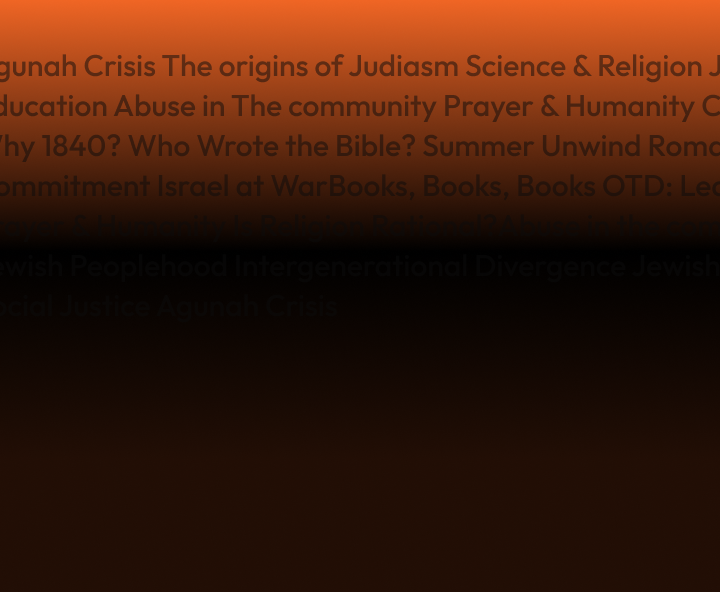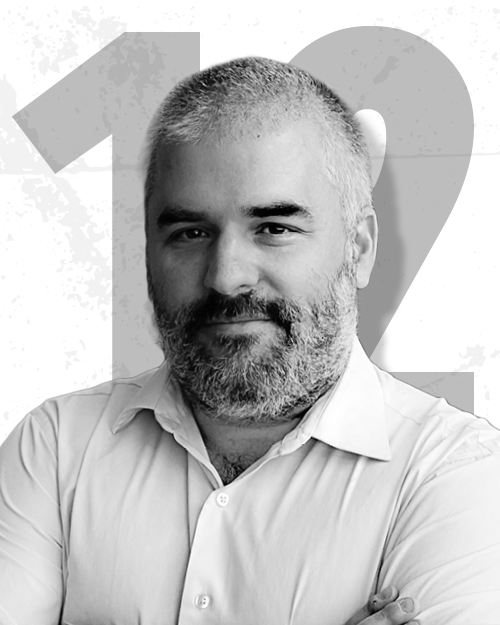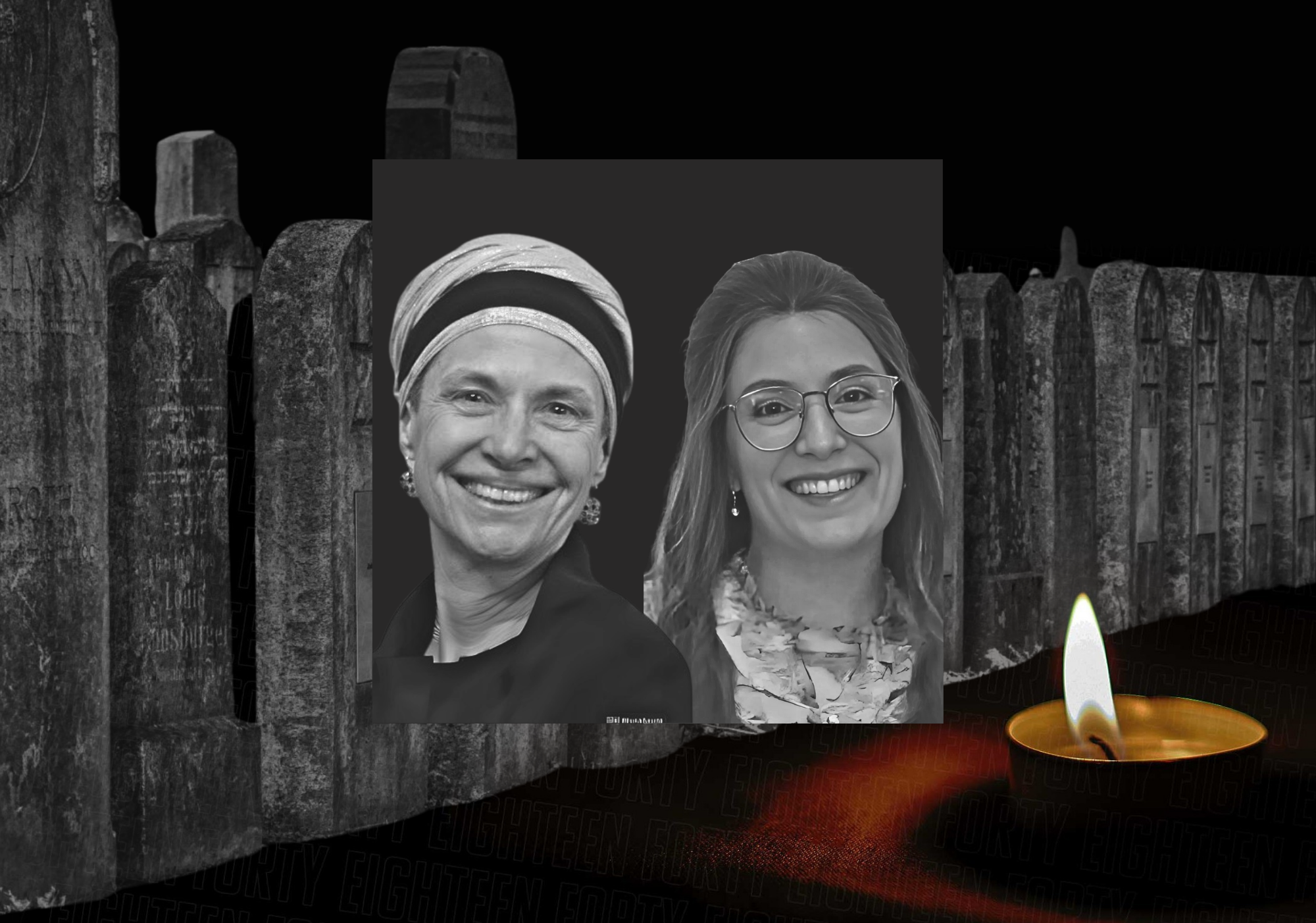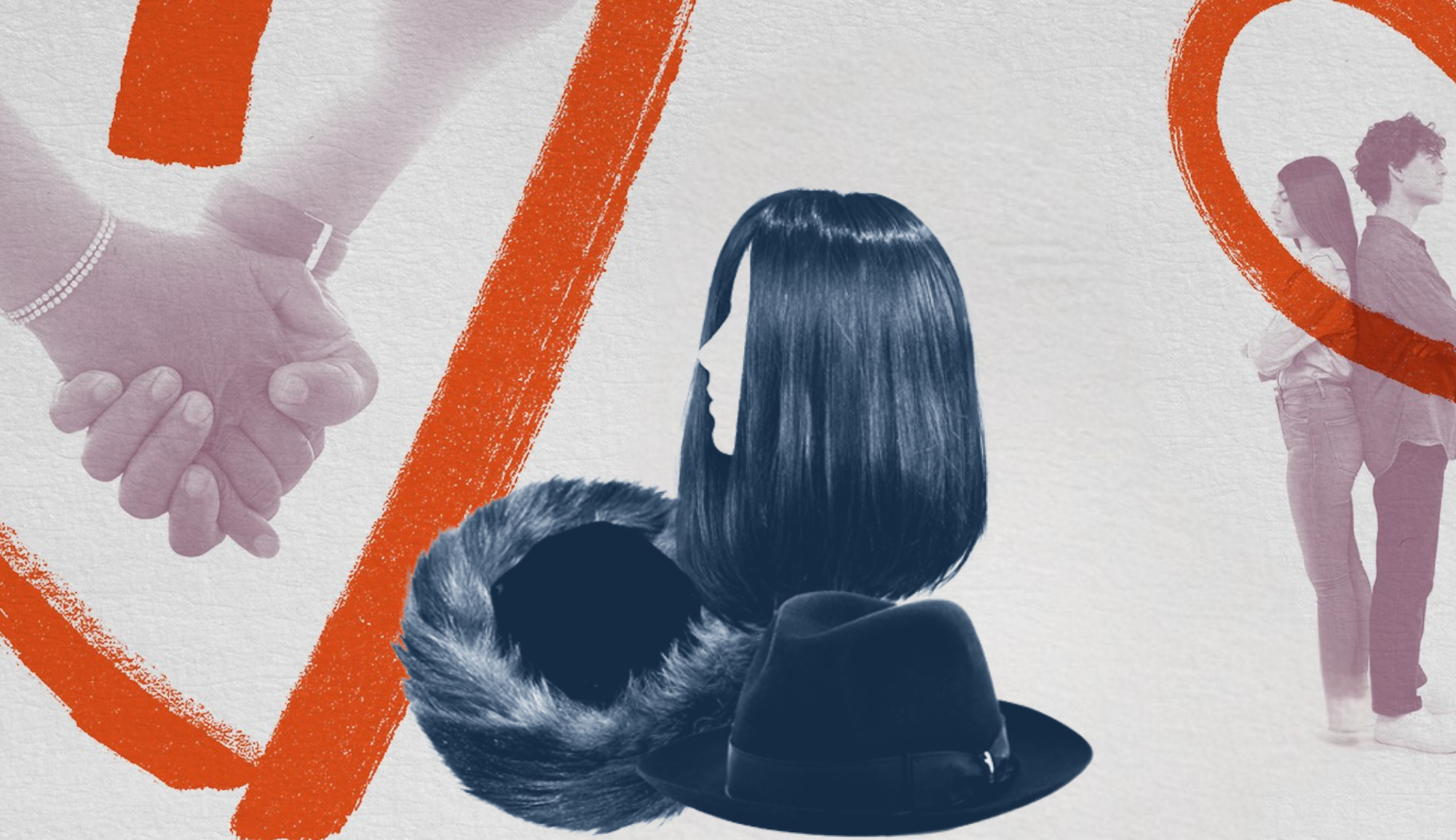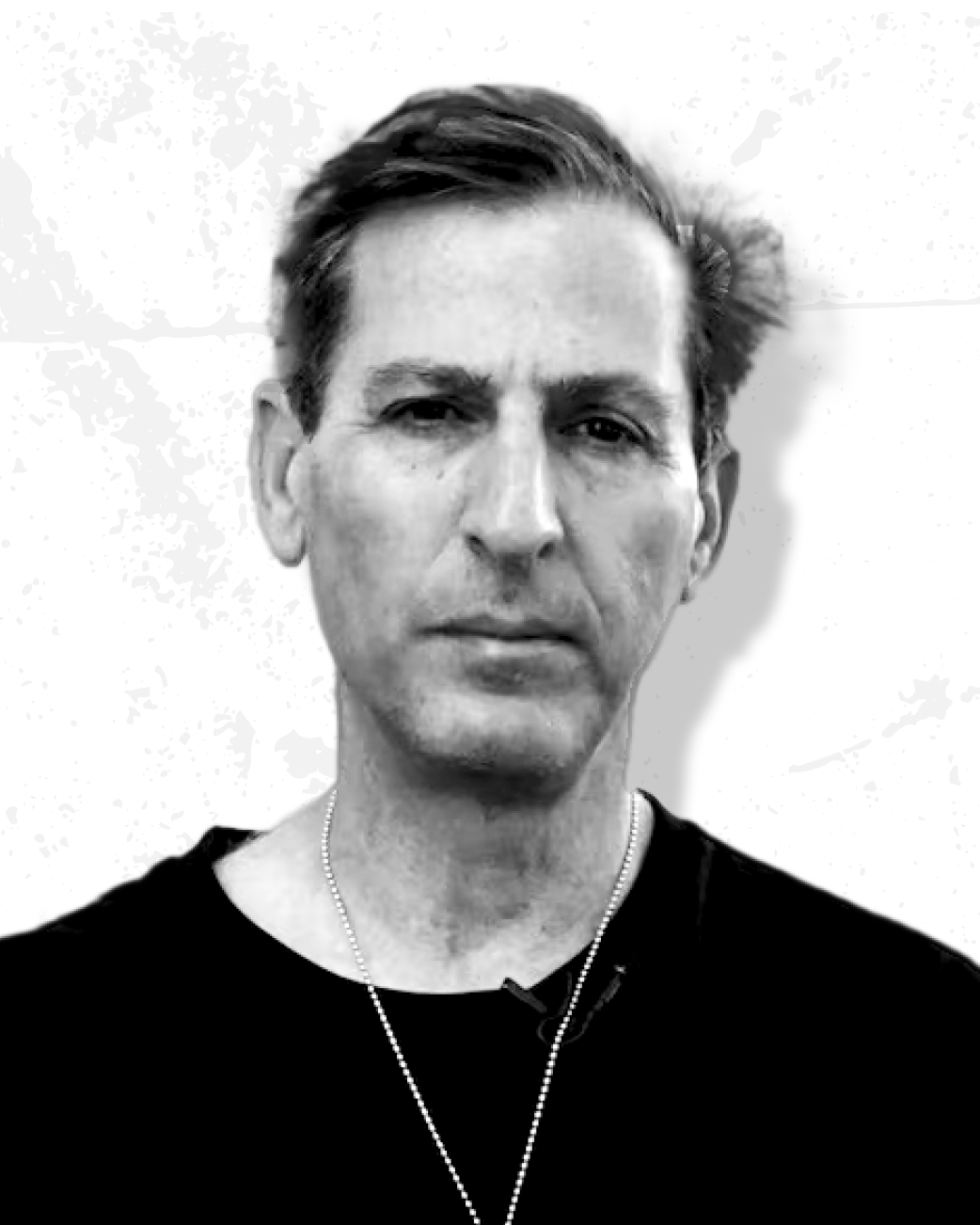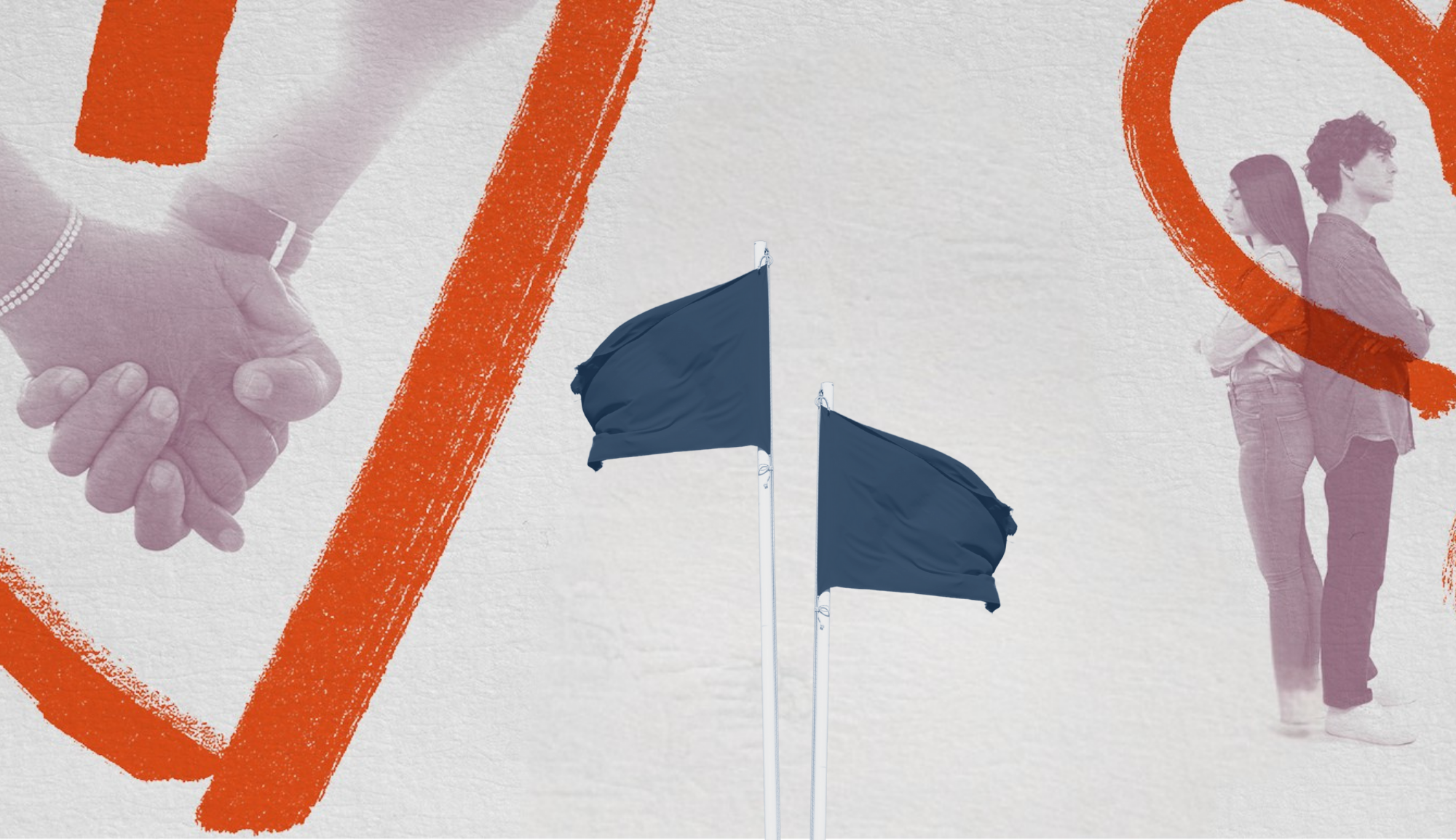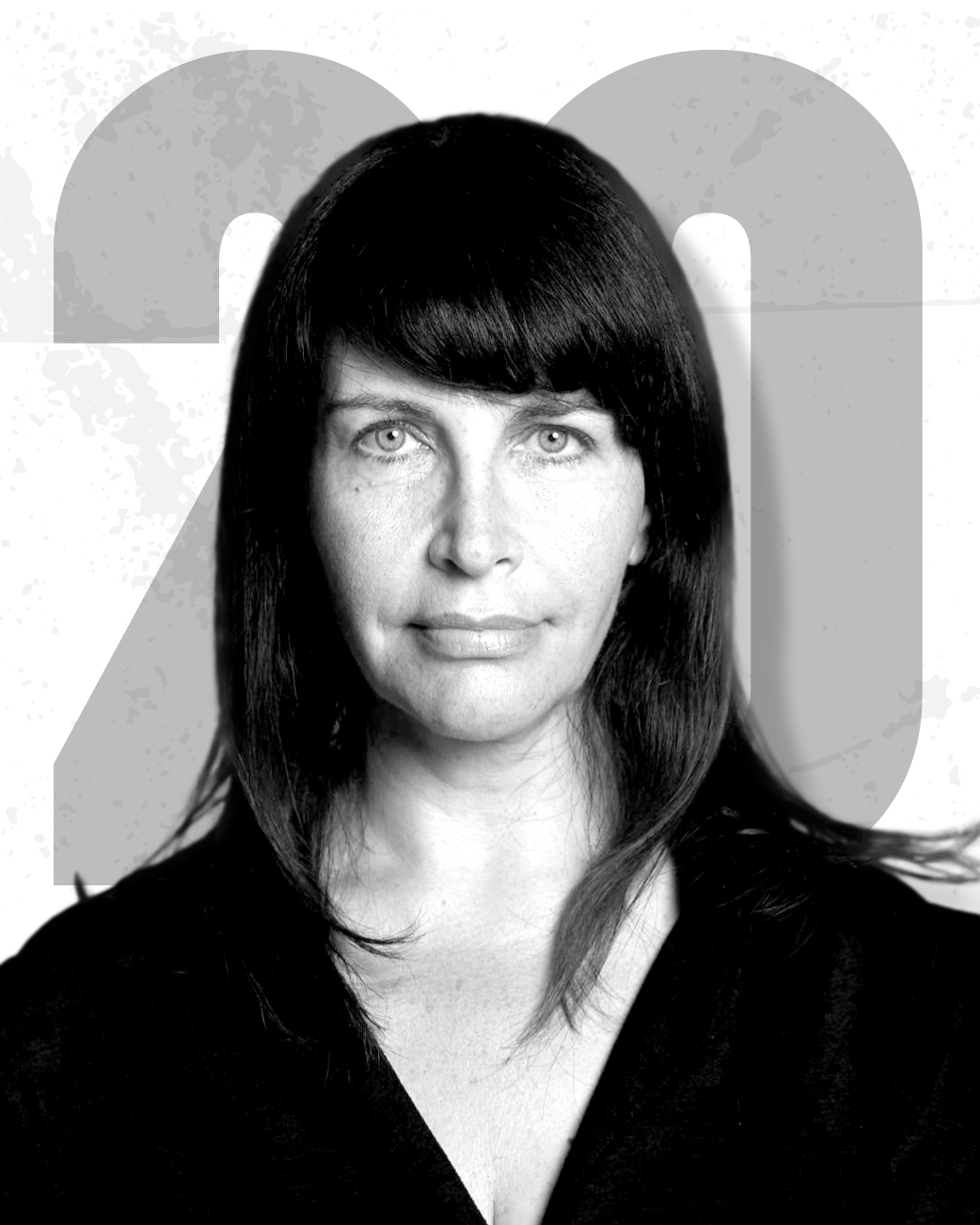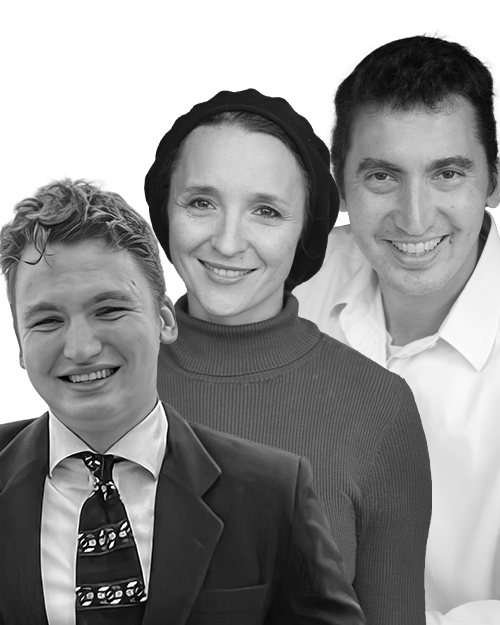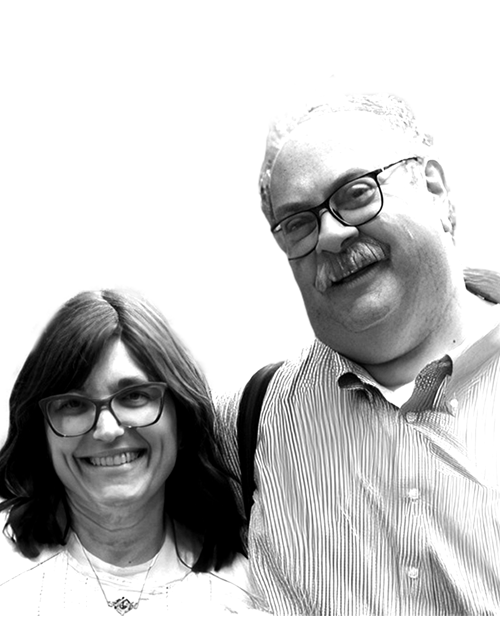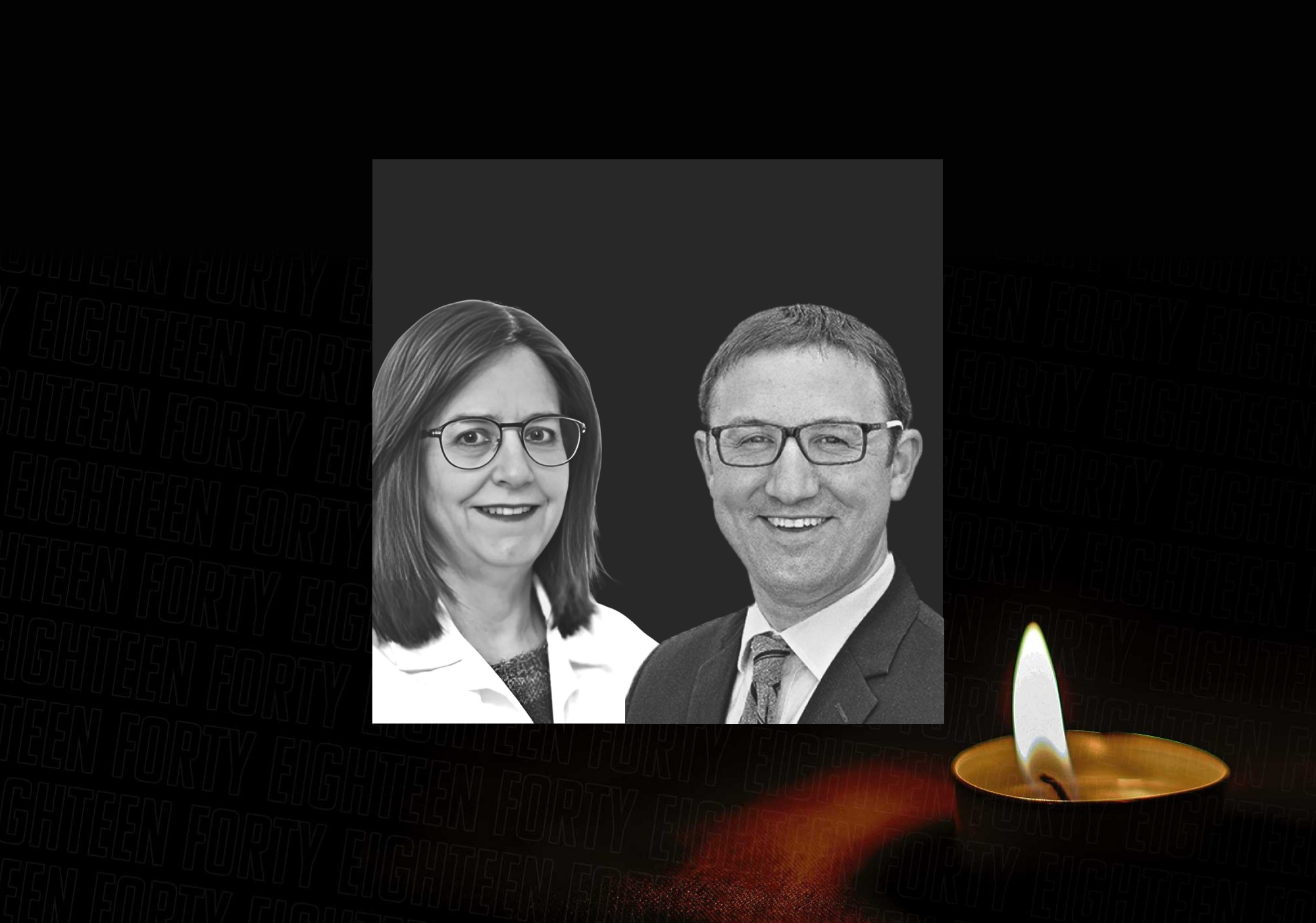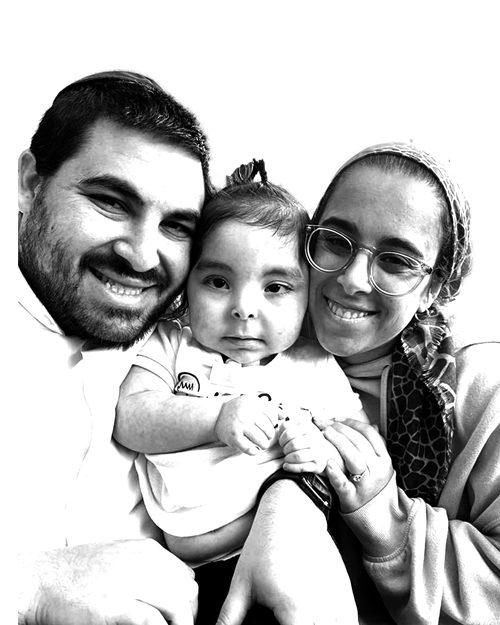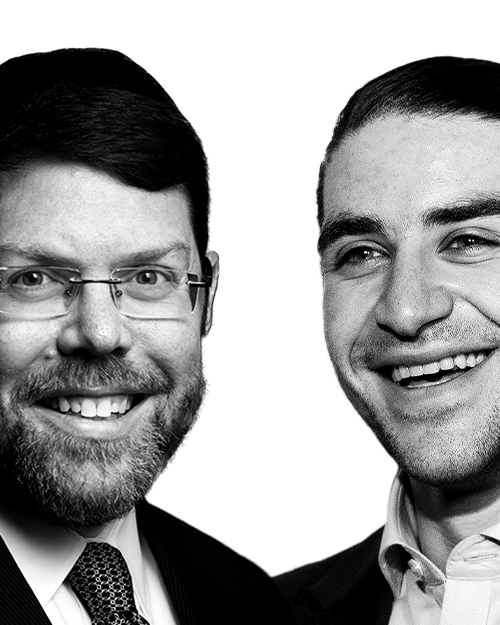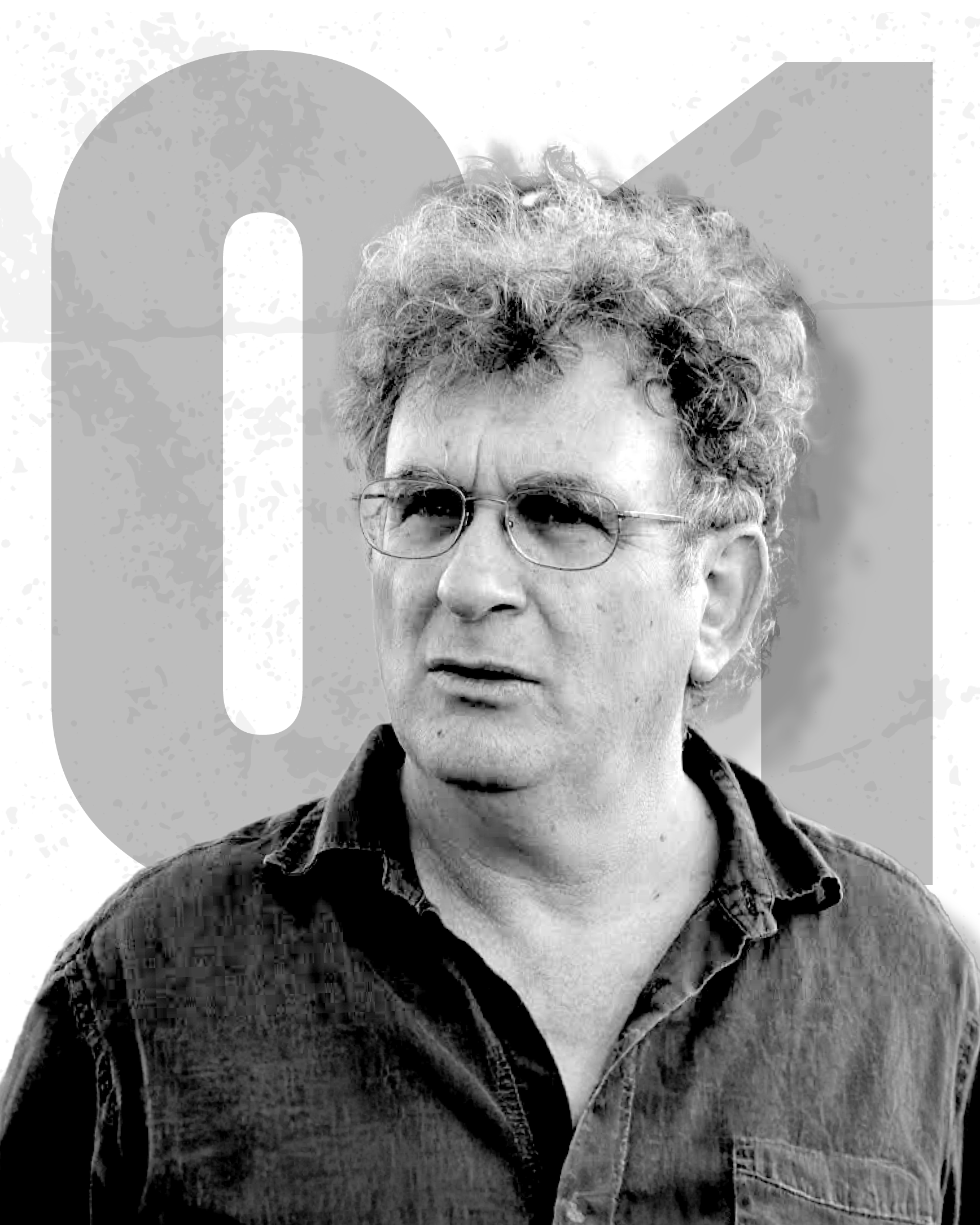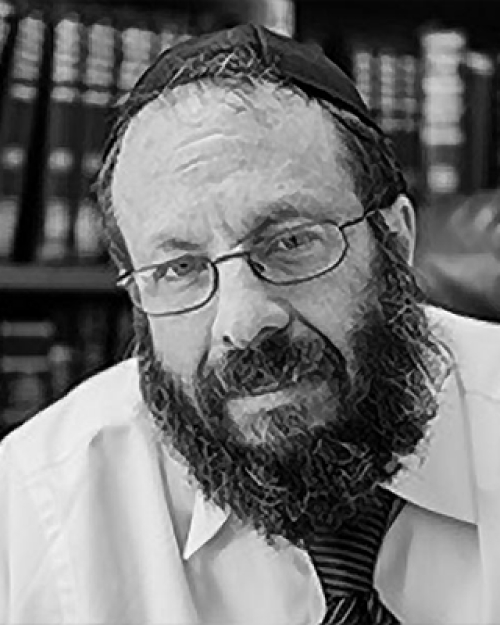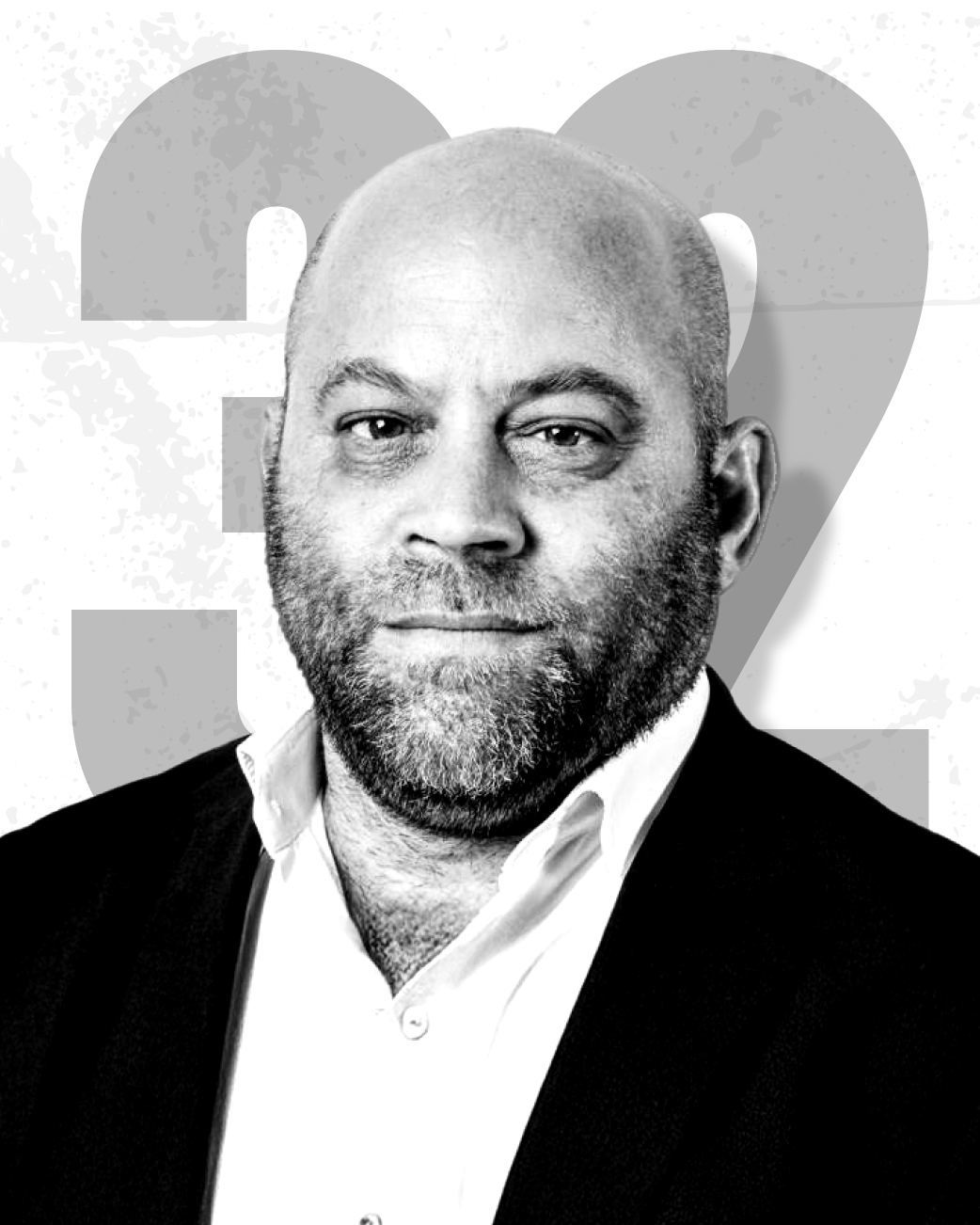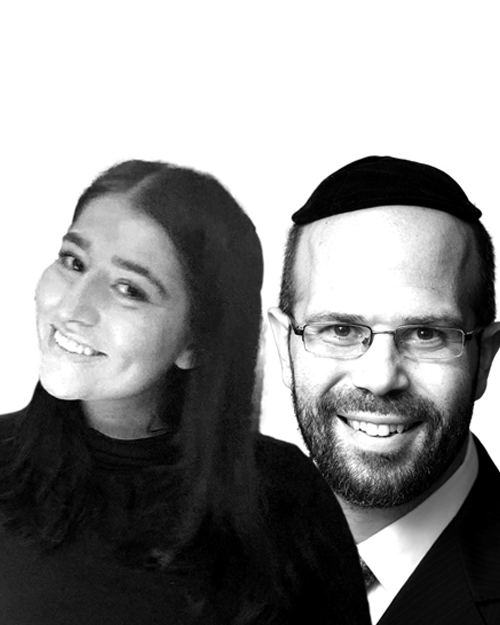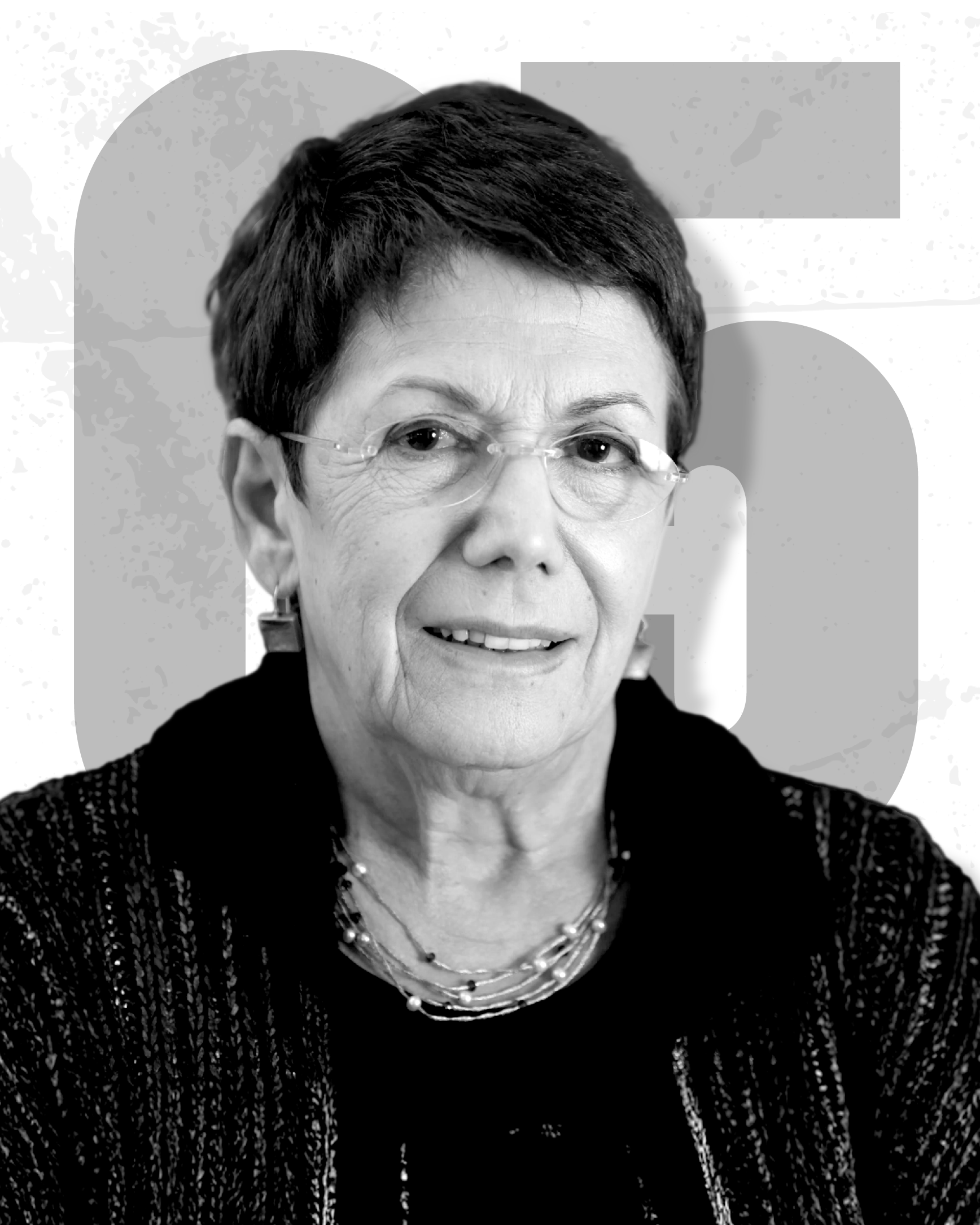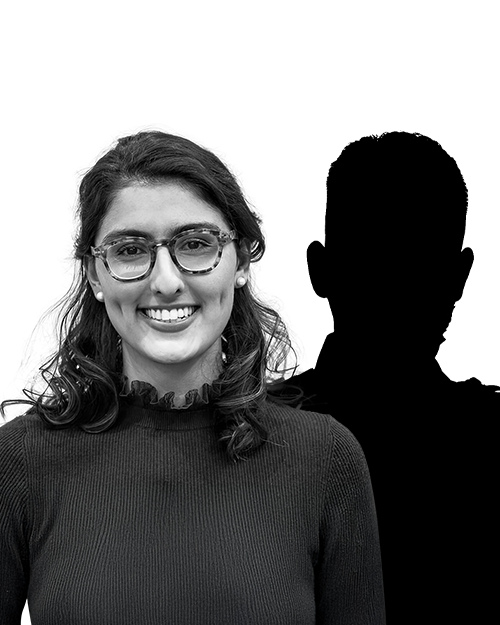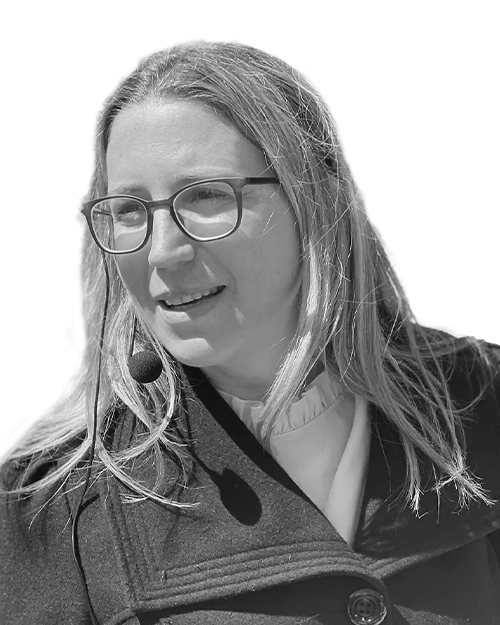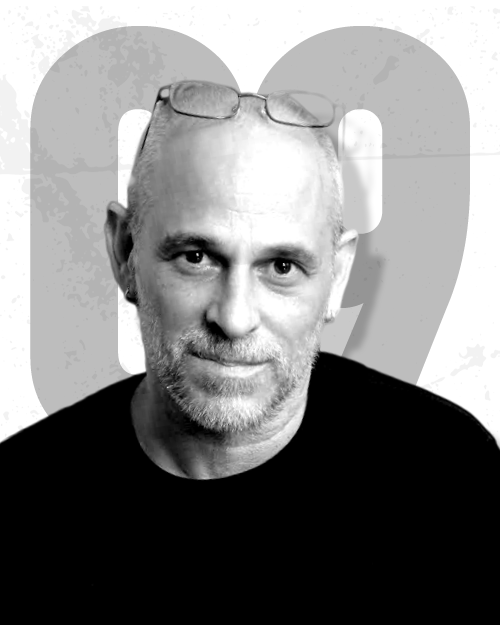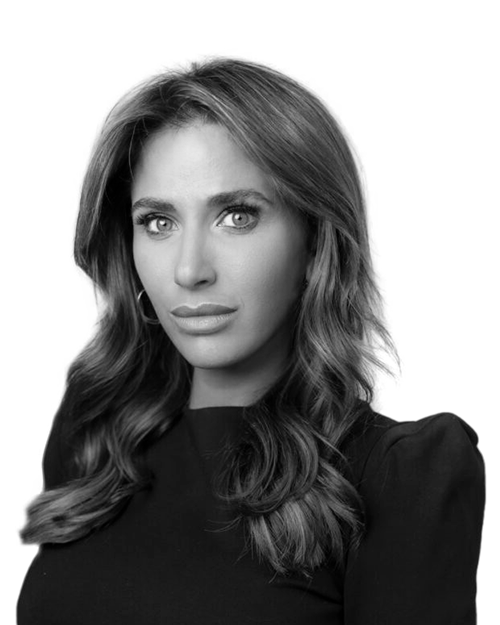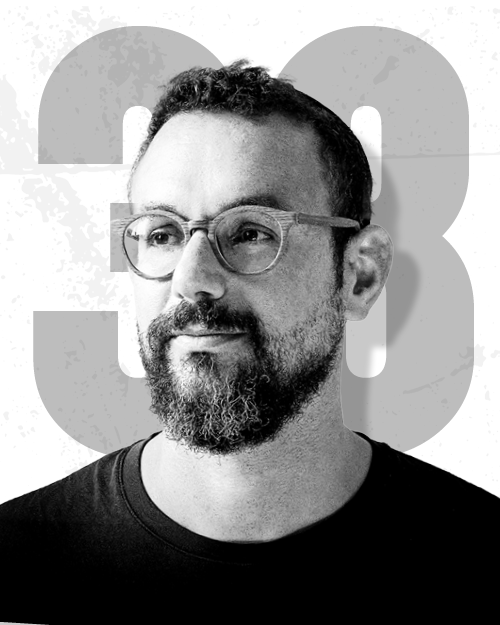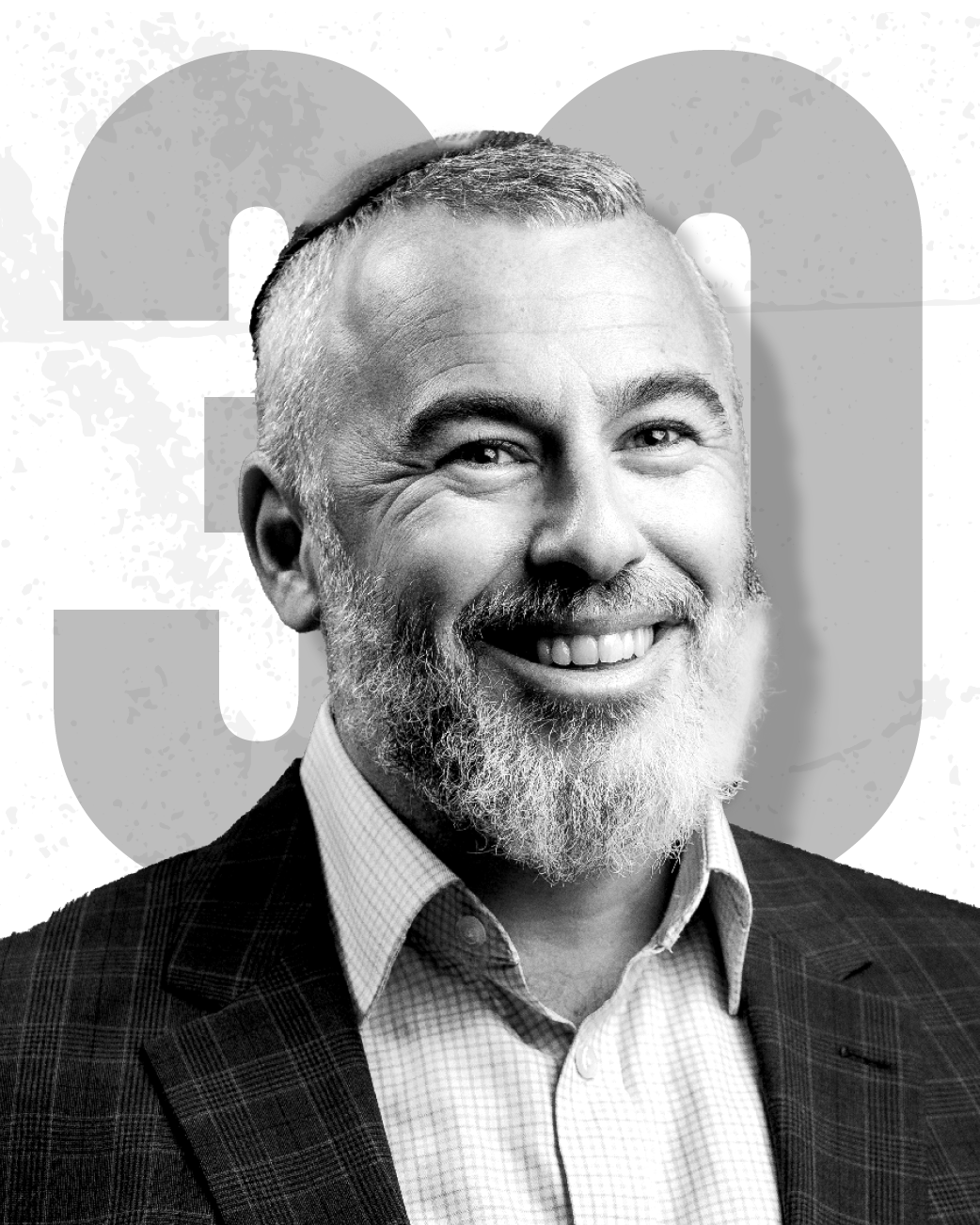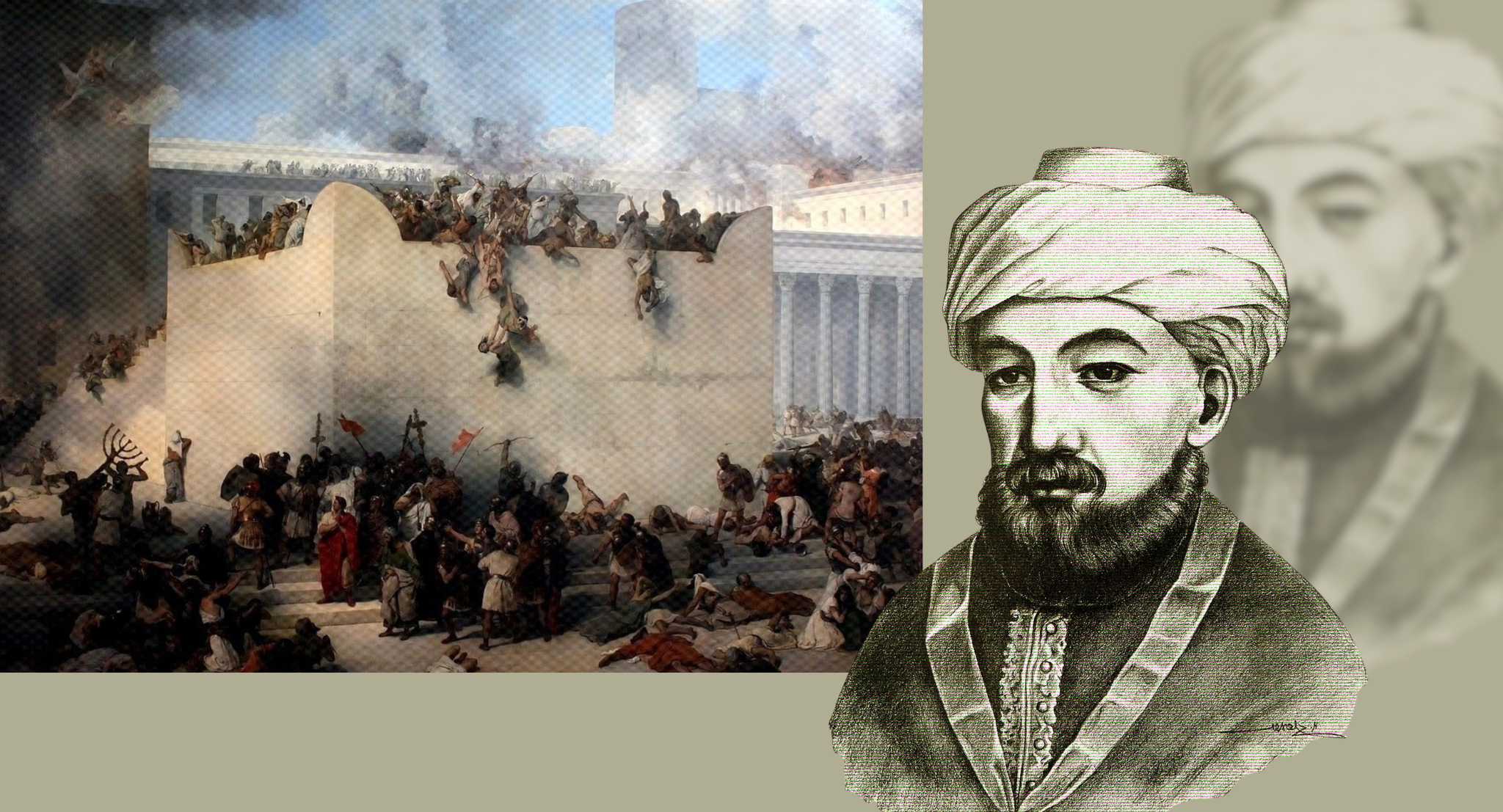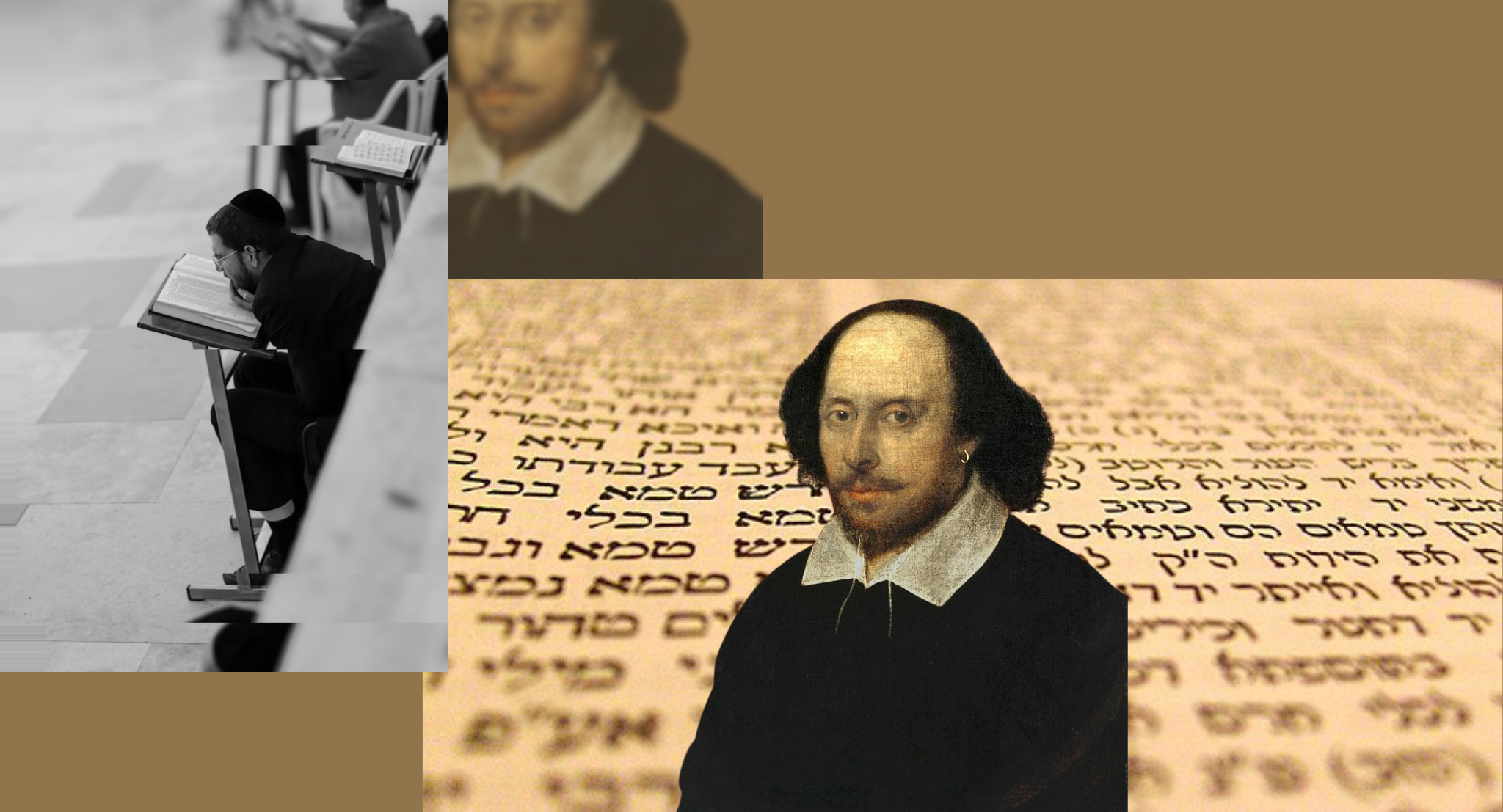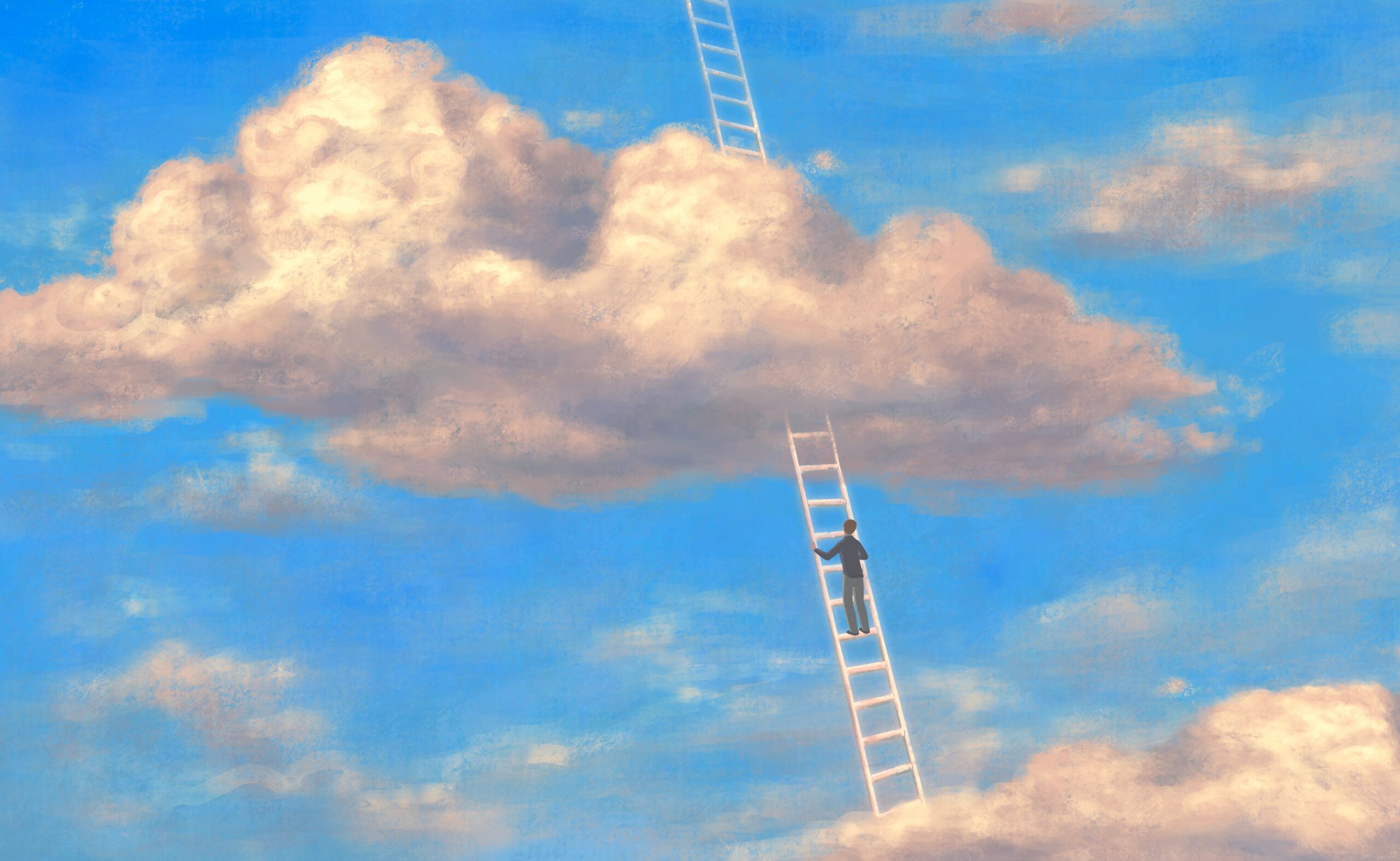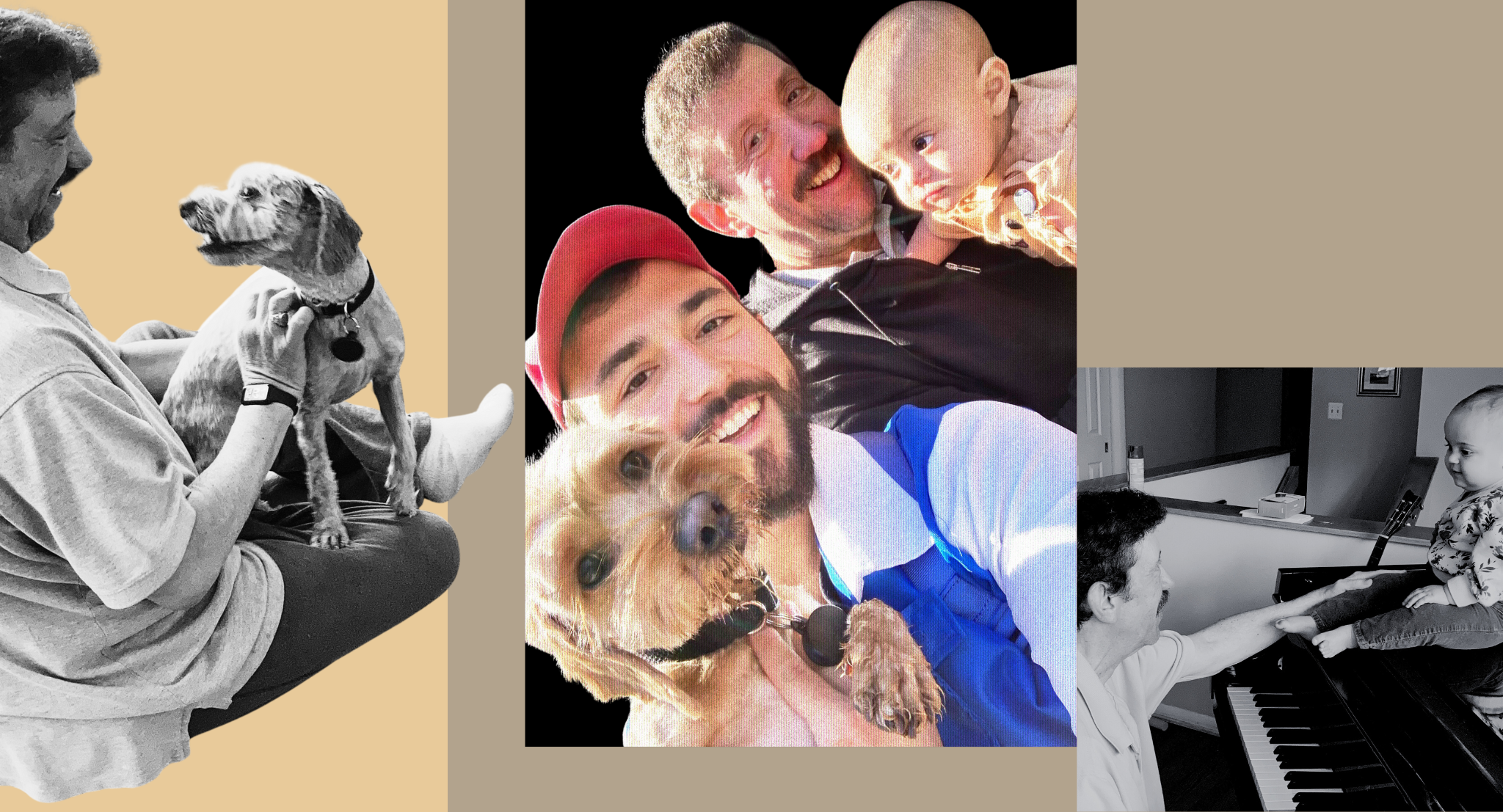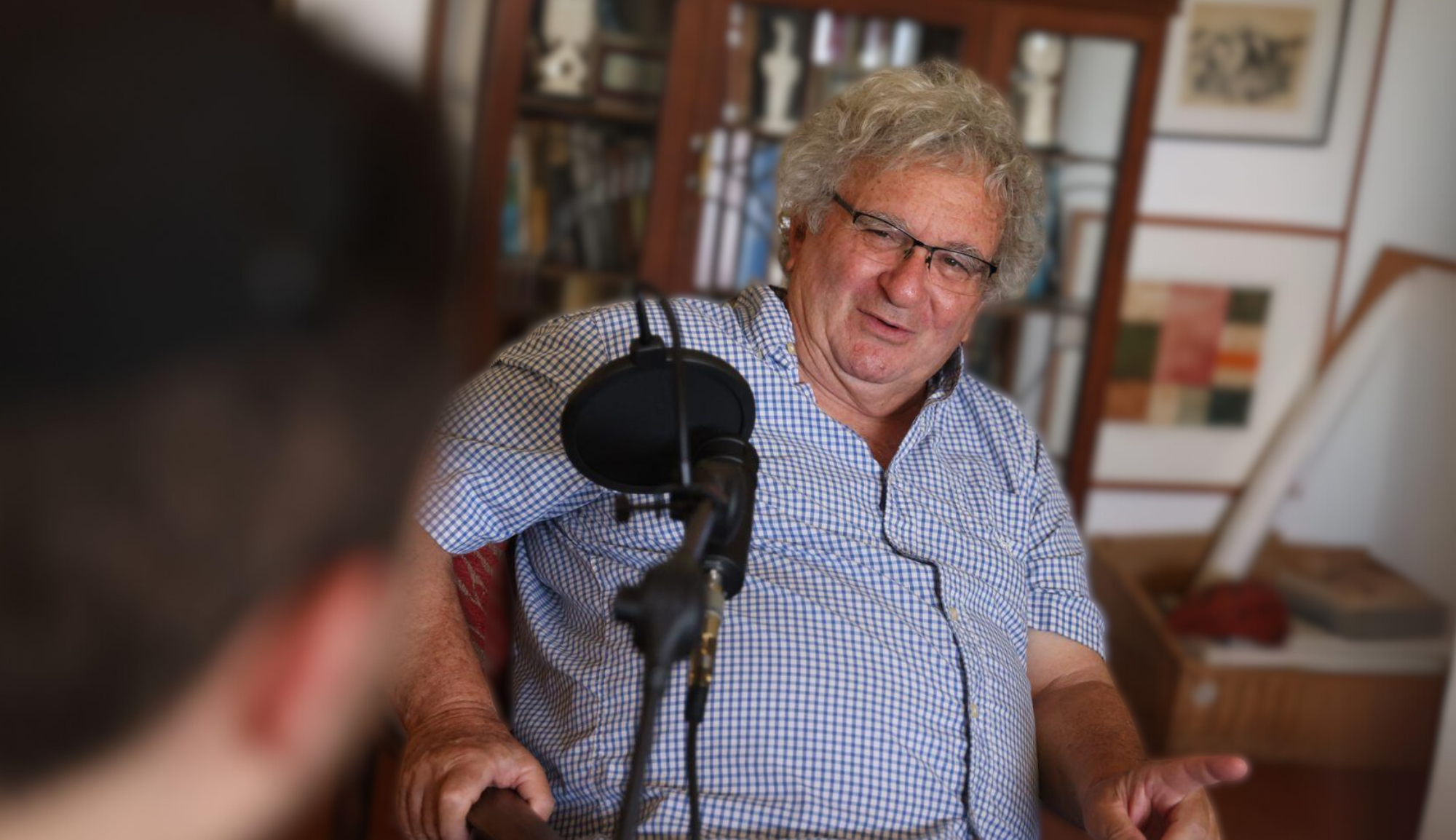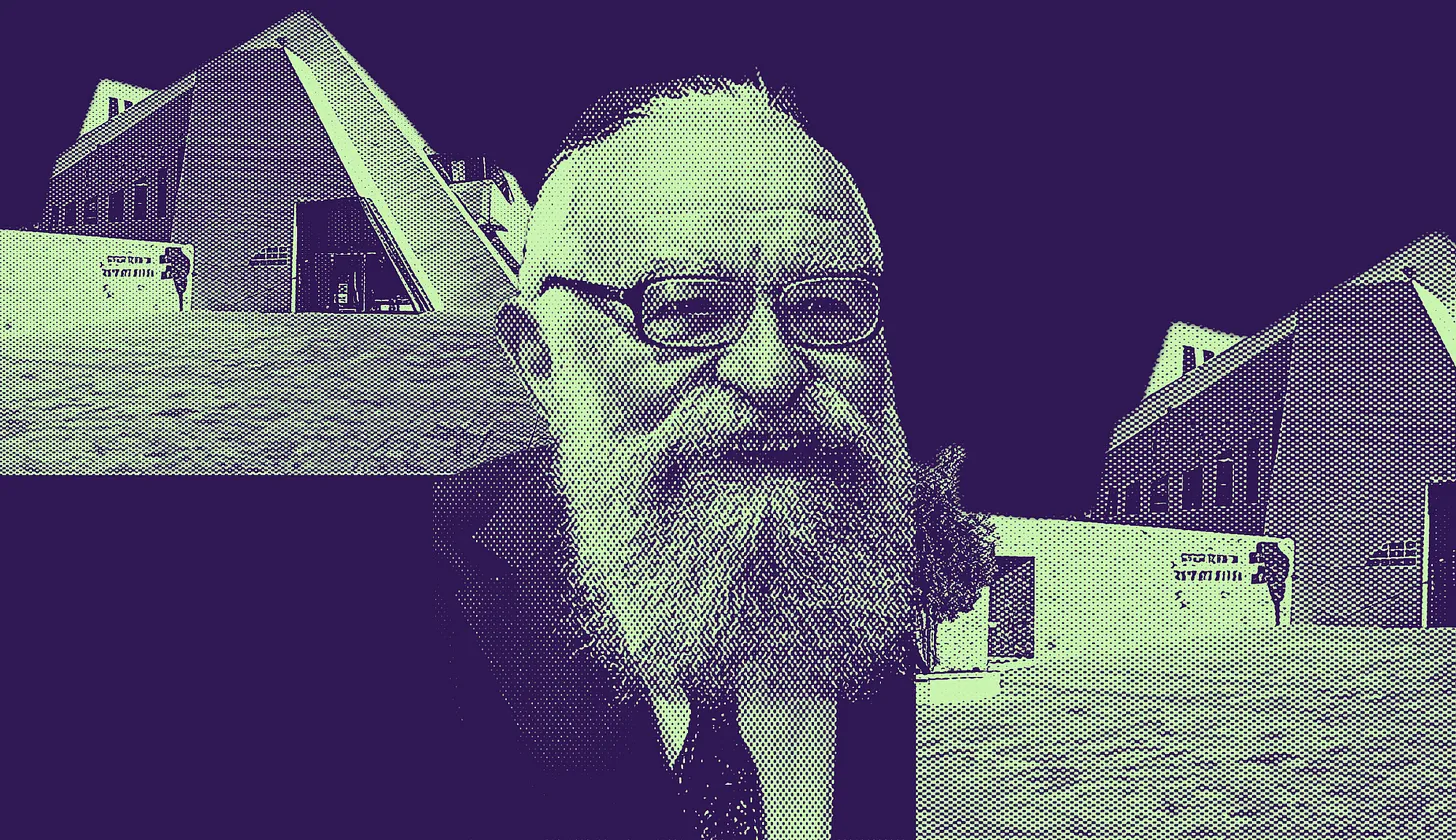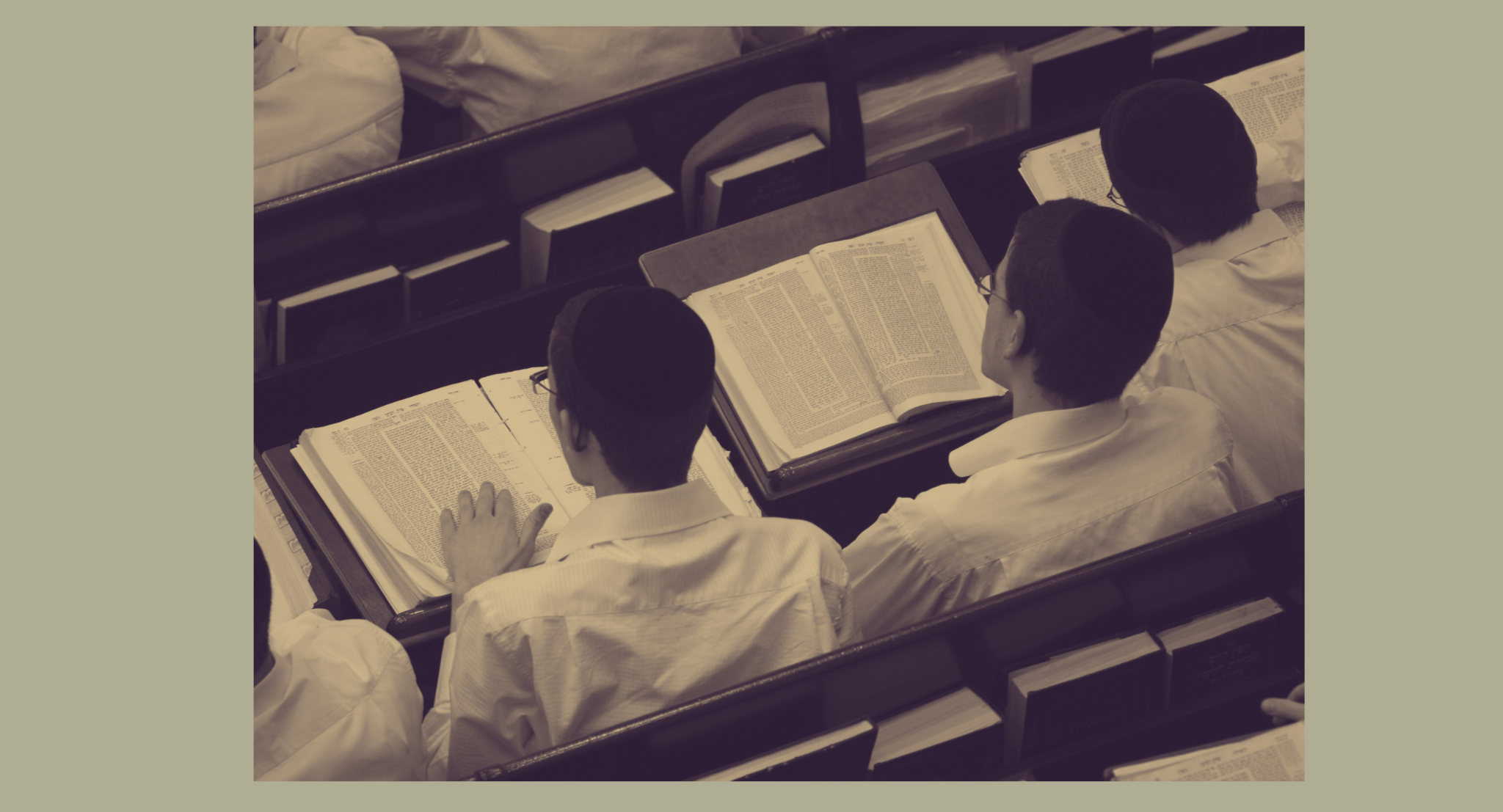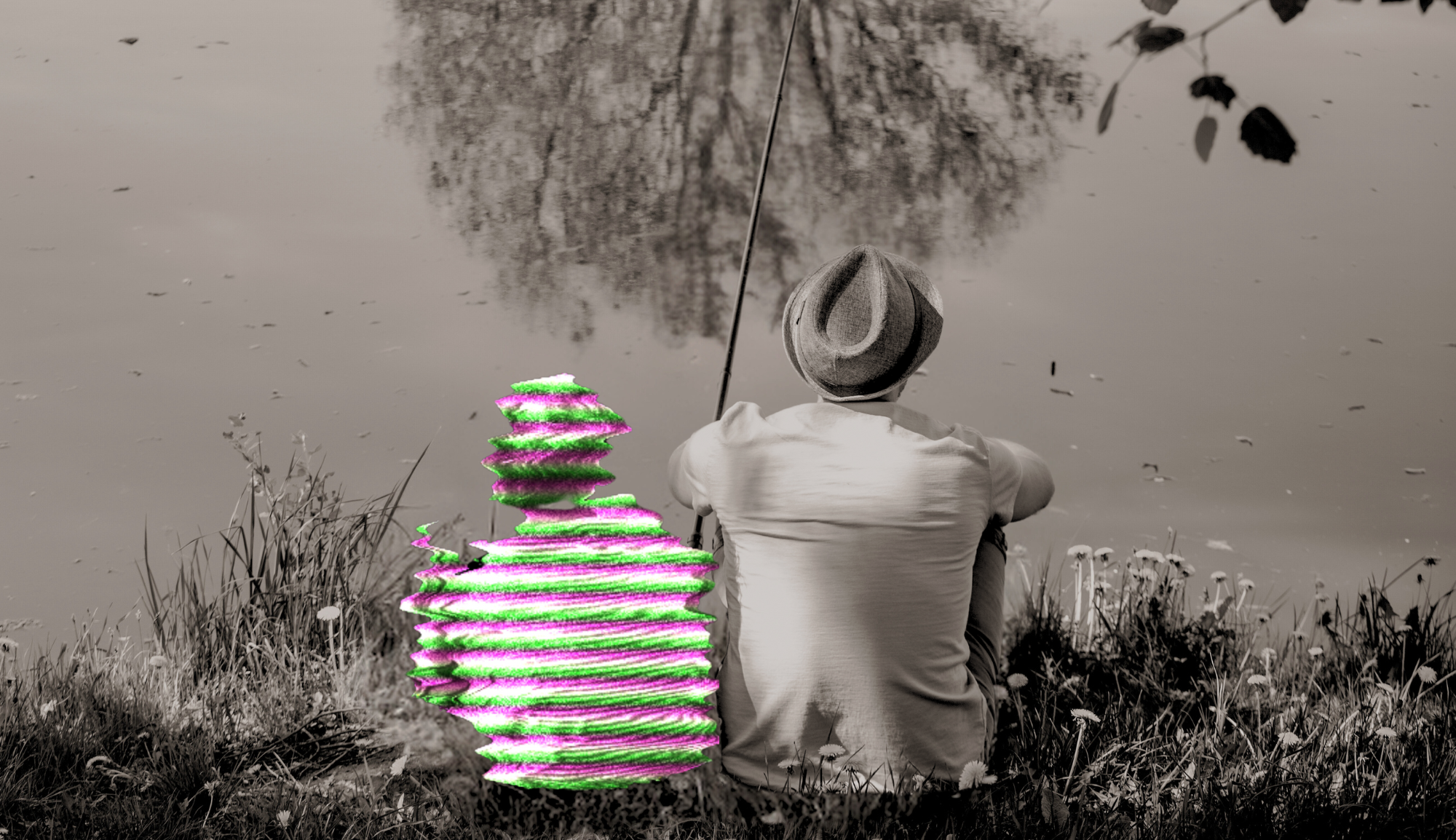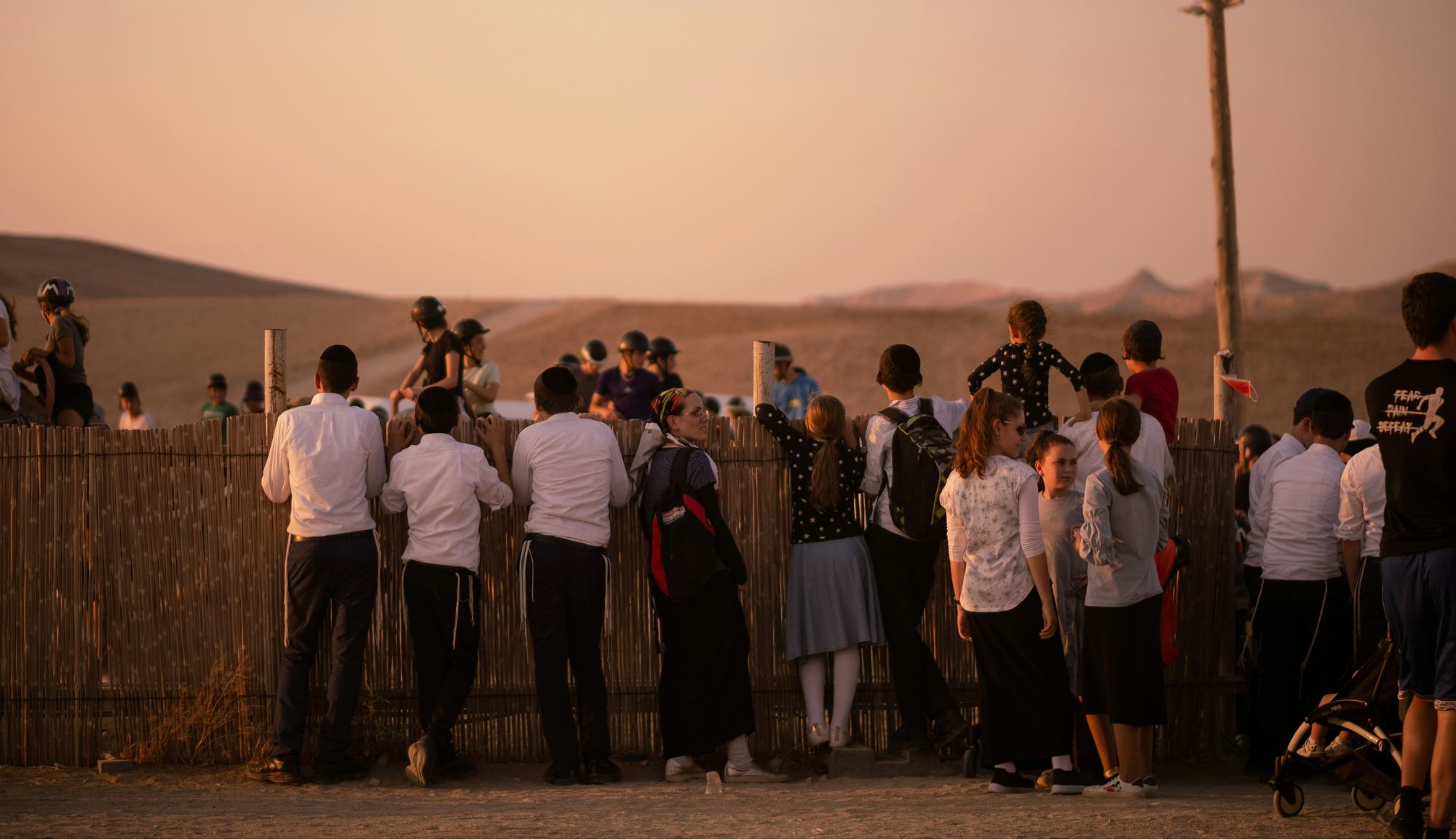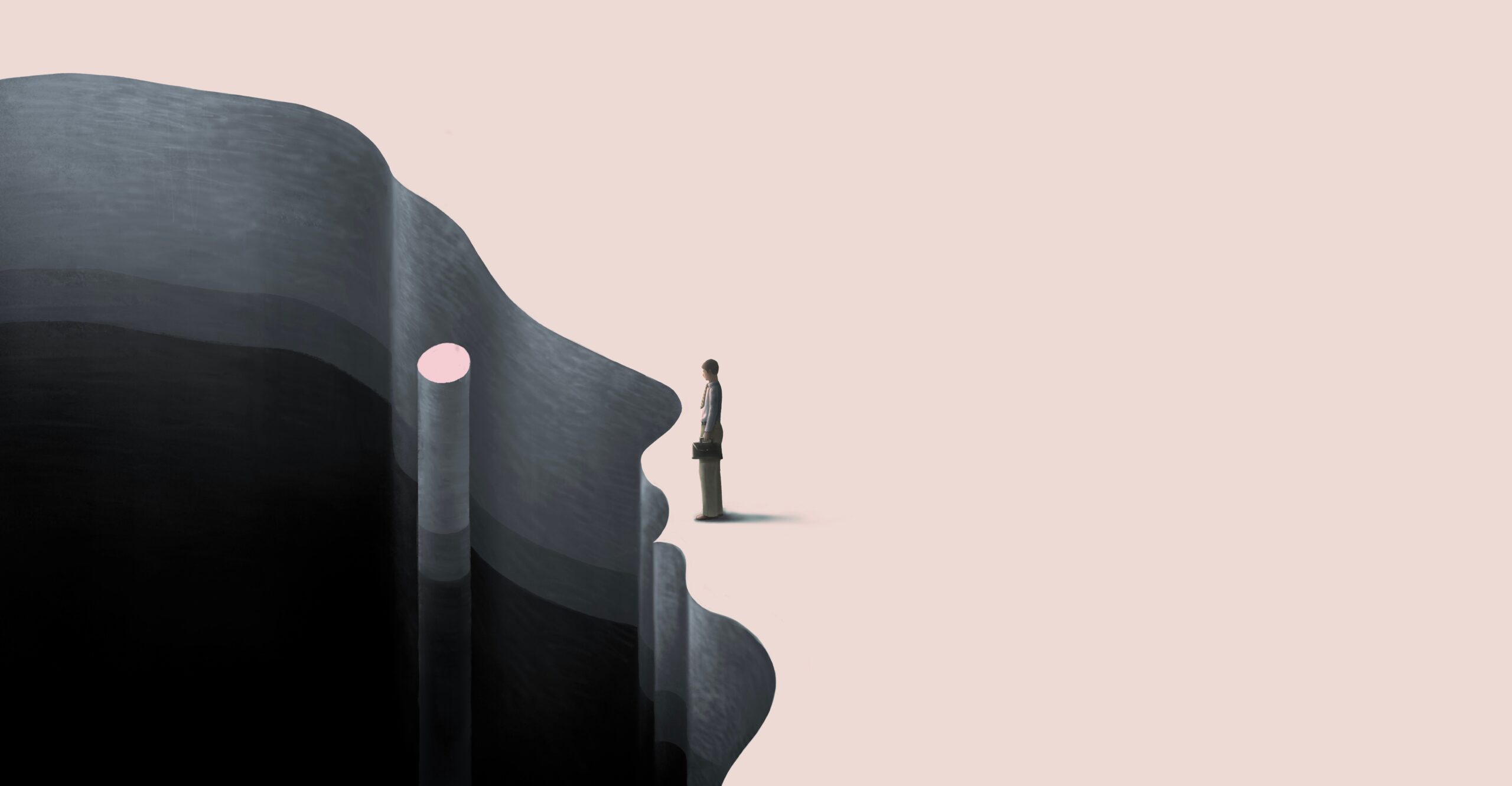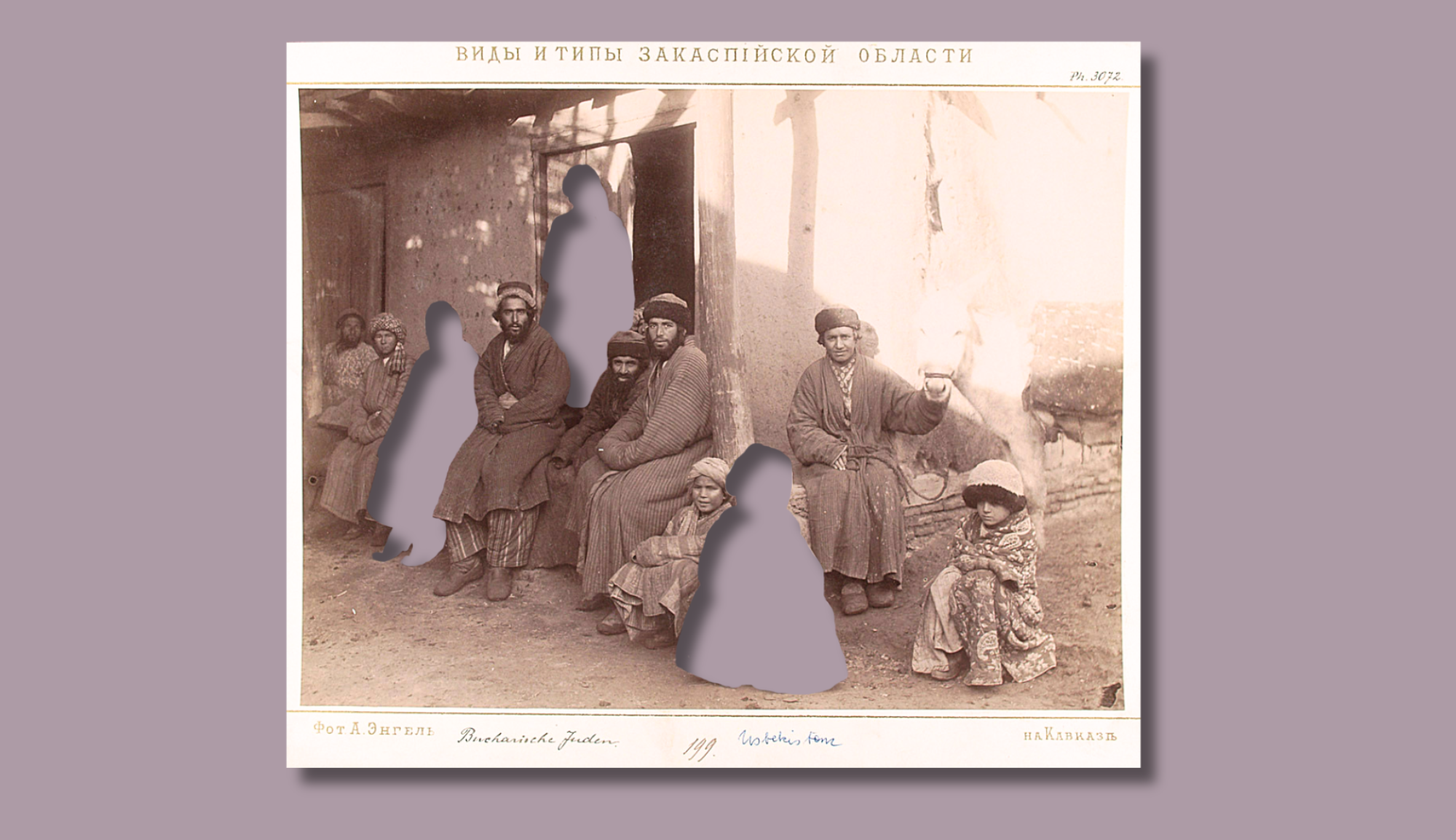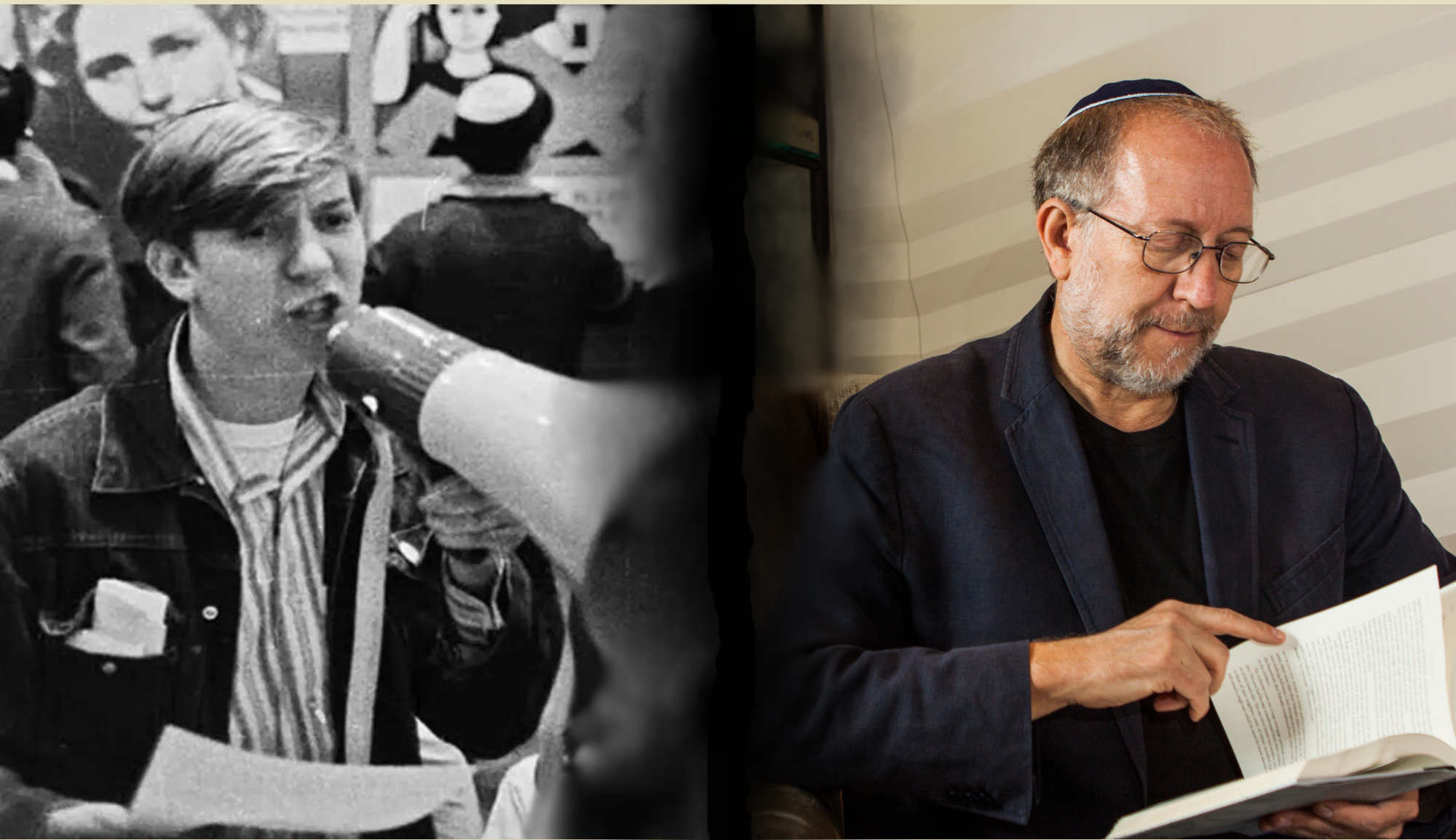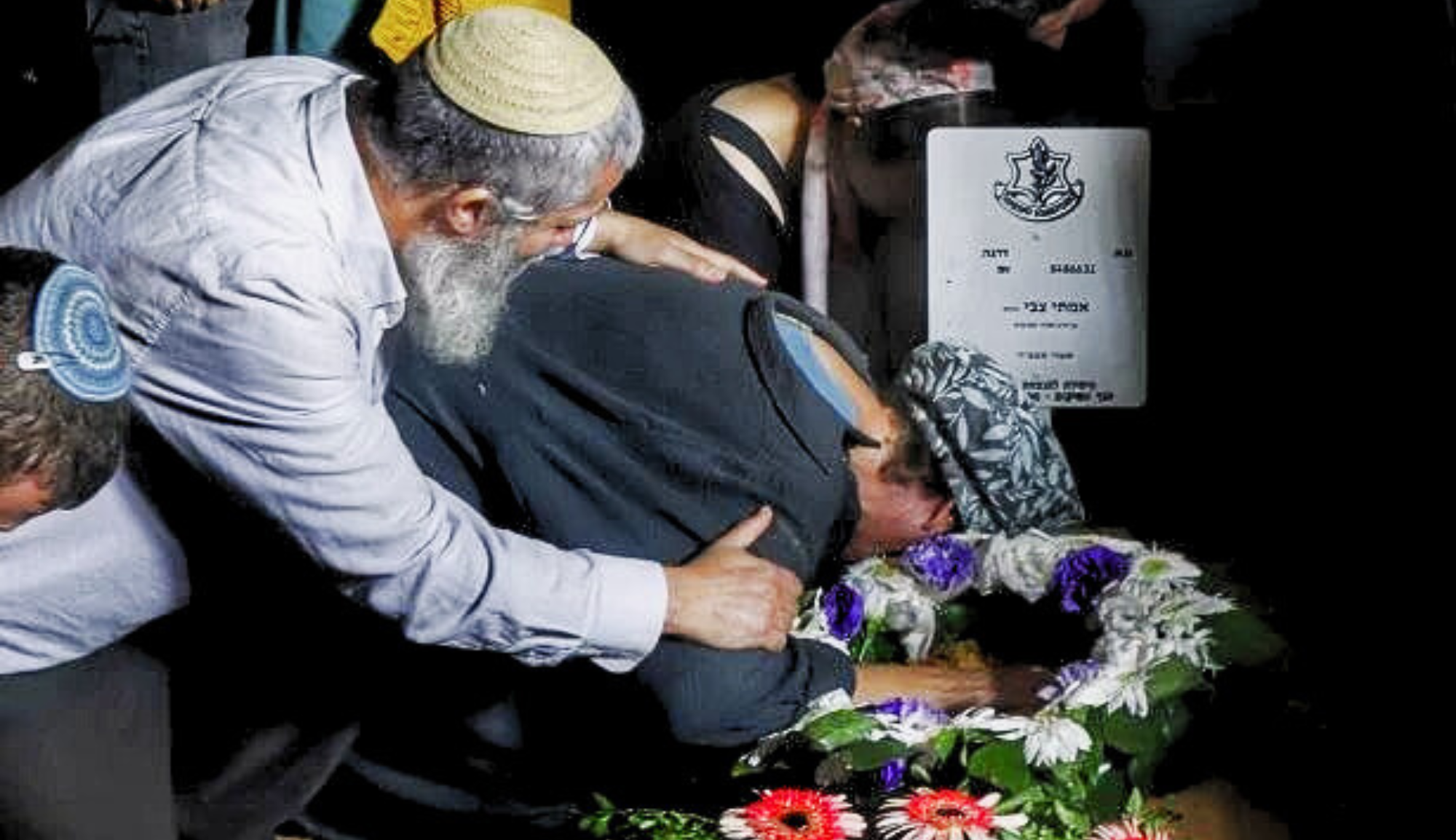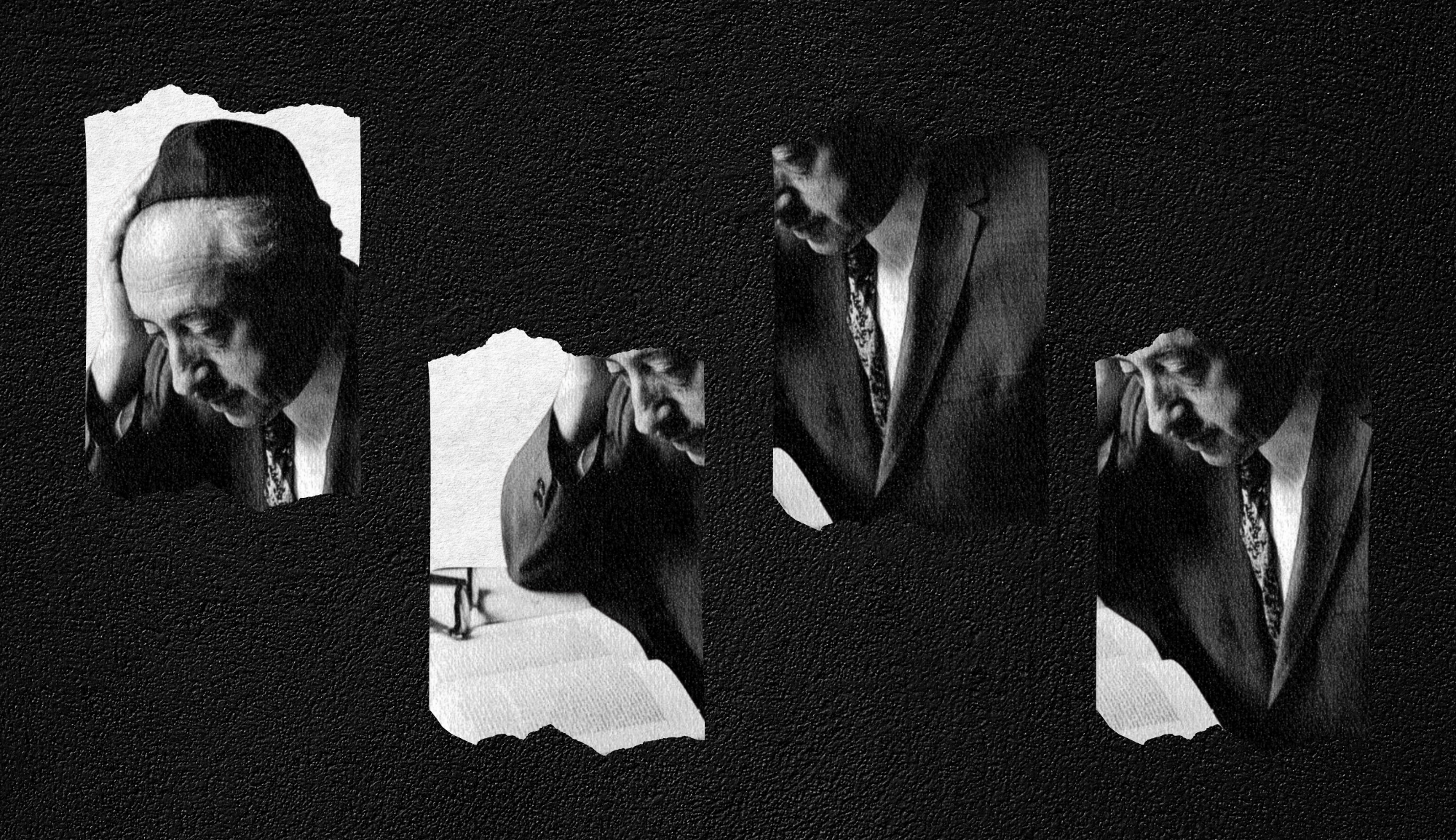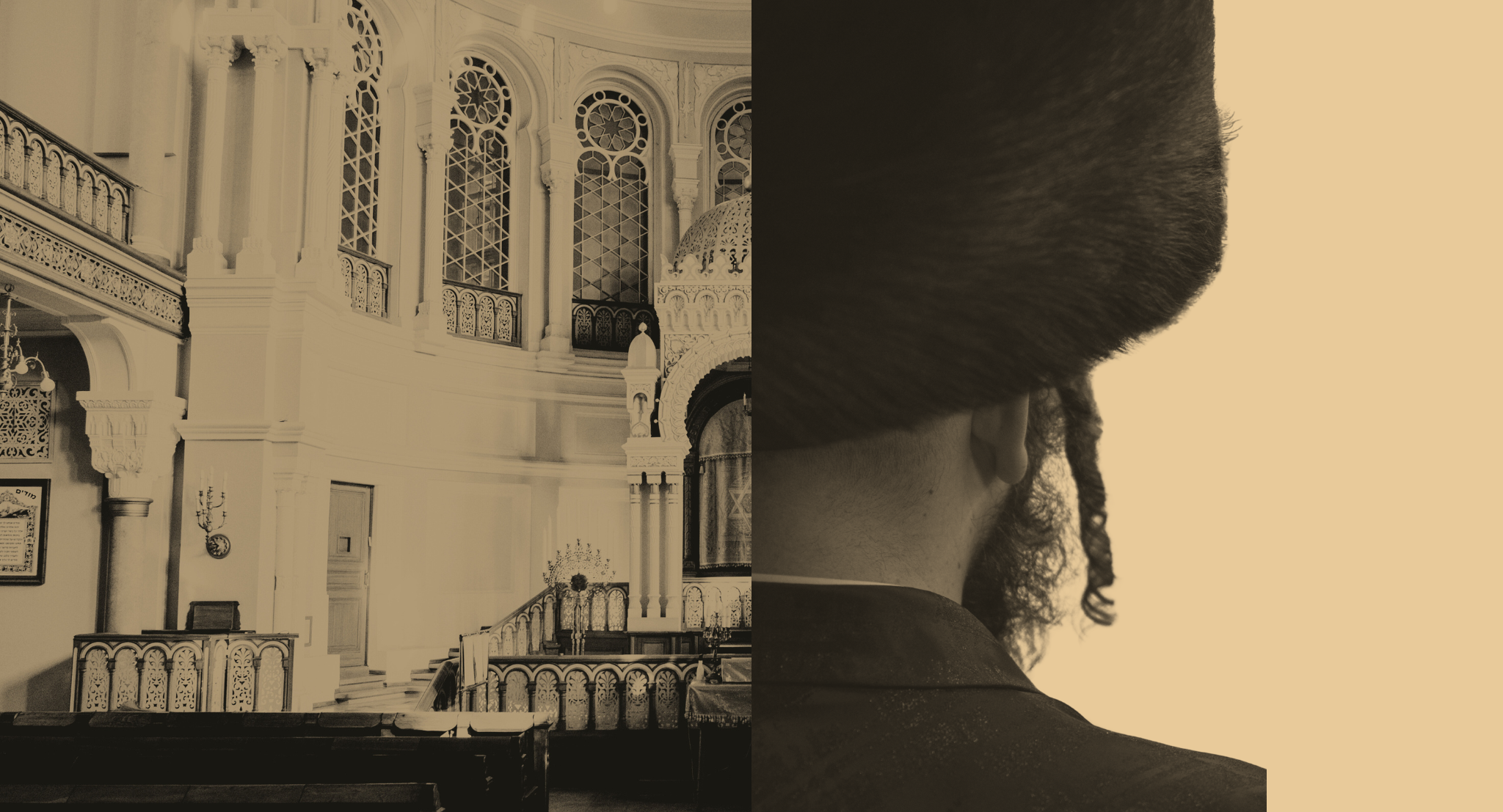Shira Berkovits: Creating Safe Spaces
In this episode of the 18Forty Podcast, we talk to Shira Berkovits, president and CEO of Sacred Spaces, about institutional abuse awareness and prevention.
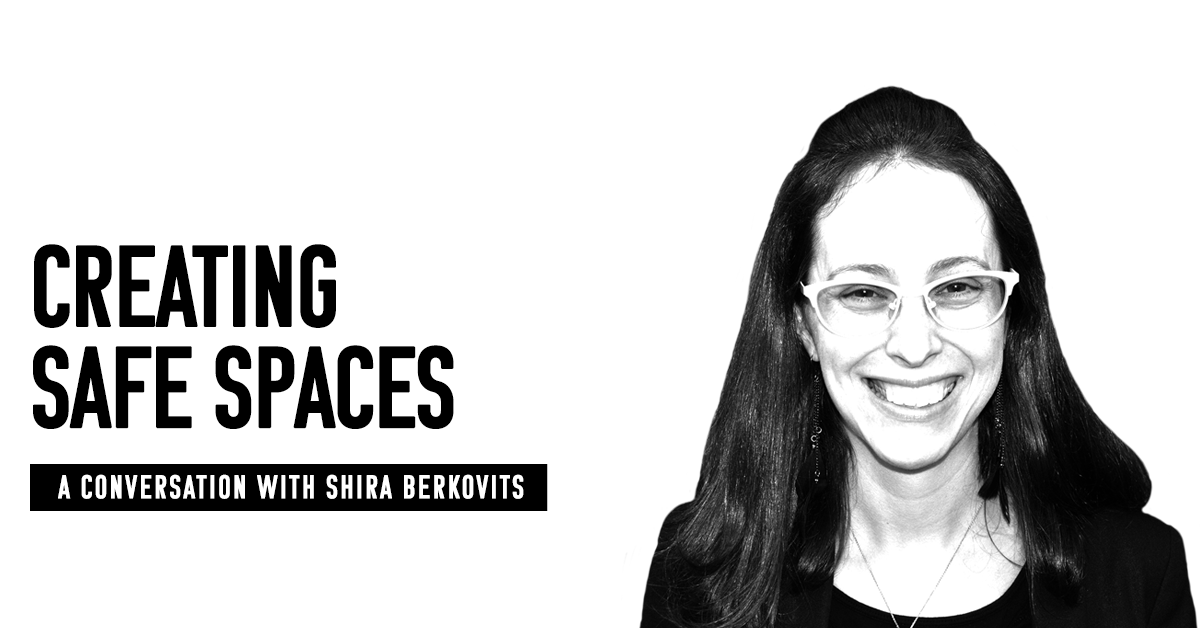
Summary
In this episode of the 18Forty Podcast, we talk to Shira Berkovits, president and CEO of Sacred Spaces, about institutional abuse awareness and prevention.
Shira is an attorney and psychologist, as well as the founder of Sacred Spaces, which partners with Jewish institutions to prevent and respond to sexual abuse and other abuses of power. Shira explains how Jewish institutions can better respond to and prevent abuse.
- What preventative measures can a Jewish institution take against abuse?
- Does religious affiliation make responding to incidents of abuse easier or harder?
- How do we begin to heal following incidents of abuse?
Tune in to hear a conversation about protecting our safe spaces.
Interview begins at 20:17.
Shira Berkovits is President and CEO of Sacred Spaces. A behavioral psychologist with a research background in creating large-scale organizational change, and an attorney specialized in criminal law, Shira has spent years studying the intersection of psychology and law as related to sexual offending in faith communities. Shira partners with Jewish leaders to build healthy and accountable institutions, working with a uniquely Jewish lens to foster sacredness and reduce the risk of harassment, abuse, and other interpersonal harm. Shira joins us to talk about creating and cultivating safe spaces in our communities.
If you or someone you know is a victim of domestic violence, please get help.
If you are in immediate danger or need emergency assistance, call 911.
Shalom Task Force Hotline: 718.337.3700; Toll Free: 888.883.2323
Jewish Board Of Family And Children’s Services Domestic Violence Services: 212.262.7655
New York Legal Assistance Group (NYLAG): 212.613.5000
References:
“Crisis Change and the Continuous Art of Individual Interpretation and Negotiation: The Aftermath of Clerical Abuse in Newfoundland” by Marion Bowman
“God is at Stake: Crisis Communications Following Religious Leadership Crises” by David Bashevkin
Sin-a-gogue: Sin, and Failure in Jewish Thought by David Bashevkin
The Brothers Karamazov by Fyodor Dostoevsk
The Grand Inquisitor by Fyodor Dostoevsk
“Institutional Abuse in the Jewish Community” by Shira Berkovits
The CDC-Kaiser Permanente Adverse Childhood Experiences (ACE) Study
Gundersen National Child Protection Training Center
2013 Resolution: Preventing Sexual Abuse in our Community
Aleinu Safeguarding Children Campaign
The Office: “Search Committee” (Season 7, Episode 24)
“Institutional Child Sexual Abuse—Not Just a Catholic Thing” by Kelly Clark
Australian Royal Commission into Institutional Responses to Child Sexual Abuse
“I Was Shamed and Shunned for Revealing My Abuse” by Ruth Krevsky
Mishna Torah – Hilchot Teshuva by Maimonides
Moore Center for the Prevention of Child Sexual Abuse
The Child Safeguarding Policy Guide by Shira Berkovits and Basyle Tchividjian
Additional Resources:
“Preventing Abuse in Jewish Organizations that Serve Youth: Ten Policies to Create Safer Environments” by Shira Berkovits
“Vayikra as a Model for Transparent Communal Governance” by Shira Berkovits, Esq., Ph.D. and Rabbi Steven Exler
“A Conversation on Safeguarding Youth in Jewish Communities” by Shira Berkovits and Daniella Pitkoff
Sacred Spaces Protocols for Safeguarding Children and Teens in Online Communication Training
Protocols for Safeguarding Children and Teens in Online Communications
“An Assessment of Menlo’s Church Report” by Zero Abuse Project and Sacred Spaces
Transcript
David Bashevkin:
Hello, and welcome to the 18Forty podcast where each month we explore a different topic, balancing modern sensibilities with traditional sensitivities to give you new approaches to timeless Jewish ideas. I’m your host, David Bashkin, and this month we’re exploring abuse within the Jewish community. This podcast is part of a larger exploration of those big juicy Jewish ideas. So be sure to check out 18forty.org, that’s 1-8-F-O-R-T-Y.org, where you can also find videos, articles, and recommended readings.
There is a movie that I have found incredibly profound, instructive in many ways about dealing with abuse within any community that is mediated by important institutions, institutions that we need. It’s actually interesting, many months ago when I was percolating and thinking about doing this topic, I was talking to a rabbi who I know was colleagues for a long time and was influenced by a rabbi who later on was arrested and was involved in an abuse case. And he was telling me himself, he says, I never was able to understand the psychology of a rabbinic abuser until I saw a movie. He recommended the movie, The Apostle starring Robert Duvall, it’s from 1997.
I can’t give you any comment on whether or not it is clean. It’s been many, many years since I have seen it, but I do remember it’s a pretty powerful performance. Part of what that movie highlights is, how the very context of religious inspiration, religious education, the very fact that you are acting as a religious role model very often can be the motivation, the motivating factor, if you’re not careful that can infringe on people’s boundaries, because there’s so much at stake, that hinges on the success, meaning people’s very conception of God. And that is a reason to be extra careful and that’s the very reason why many rabbis, I’m not a psychologist, but that’s the very reason why many people in a religious context can sometimes be less careful.
There’s so much at stake. He was so inspirational, inspired so many. And this movie, The Apostle and this incredible character portrayed by Robert Duvall. Again, it’s an oldie, it’s a goodie, but just double check the ratings and whether or not there’s anything inappropriate in there because I honestly don’t remember, but the character that he plays is an abusive person who the very commitment to religious belief is the motivating factor to why he’s really has this unhealthy relationship with others. One of the quotes from the movie that always stuck with me is this pastor says, I may be on the devil’s hit list, but I’m on God’s mailing list. And there’s an unhealthiness to that.
There’s an unhealthiness to somebody saying, I am the person who is going to mediate people’s sense of godliness for others. And even if I am, so to speak, on the devil’s hit list, but I am on God’s mailing list. And that can be an excuse for certain behaviors, certain interactions, the way that you relate to others, that you are not accountable because you think that I am doing such important work, that I am not being accountable in the way that I should be. But I actually want to talk about a specific scene in a different movie, which I do believe is kosher. If you’re watching movies, this is definitely a profound movie. It’s called Doubt. It came out in 2008. I believe it’s based on a play and it stars, Meryl Streep, Philip Seymour Hoffman of blessed memory. We miss him. And Amy Adams, Viola Davis. It is really, really a powerful movie.
And it’s a movie about an allegation against a pastor, a questionable allegation. It’s really the movie deliberately leaves it ambiguous about whether or not this person is in fact guilty. But there is a powerful scene that I come to over and over again when this nun, played by Meryl Streep, confronts Philip Seymour Hoffman, about what she believes is her own certainty, that he has not acted properly, that he has been guilty of sexual impropriety with one of these alter boys under his care. And she finally confronts him. And it’s a scene that has always stuck with me, but I want you to listen in and then I’ll explain why.
Sister Aloysius Beauvier:
This morning, before I spoke with Mrs. Miller, I took the precaution of calling your last parish.
Father Brendan Flynn:
What did he say?
Sister Aloysius Beauvier:
Who?
Father Brendan Flynn:
The pastor?
Sister Aloysius Beauvier:
I did not speak to the pastor. I spoke to a nun.
Father Brendan Flynn:
You should have spoken to the pastor.
Sister Aloysius Beauvier:
I spoke to a nun.
Father Brendan Flynn:
Yeah. That’s not the proper route for you to have taken, sister. The church is very clear, you’re supposed to go through the pastor.
Sister Aloysius Beauvier:
Why? You have an understanding, you and him?
Father Brendan Flynn:
No. You have no right to go rummaging through my past.
Sister Aloysius Beauvier:
You have a history. This is your third parish in five years. Why?
Father Brendan Flynn:
Call the pastor. Ask him why I left. It’s perfectly innocent.
Sister Aloysius Beauvier:
I’m not calling the pastor.
Father Brendan Flynn:
I’m a good priest.
Sister Aloysius Beauvier:
Go after another child. And another child until you are stopped.
Father Brendan Flynn:
What nun did you speak to?
Sister Aloysius Beauvier:
I won’t say.
Father Brendan Flynn:
I’ve not touched a child.
Sister Aloysius Beauvier:
You have!
Father Brendan Flynn:
You haven’t the slightest proof of anything.
Sister Aloysius Beauvier:
But I have my certainty. And armed with that, I’ll go to your last parish and the one before that. If necessary, I’ll find a parent. Trust me Father Flynn. I will.
Father Brendan Flynn:
You have no right to act on your own. You have taken vows, obedience being one. You answer to us. You have no right to step outside the church.
Sister Aloysius Beauvier:
I will step outside the church if that’s what needs to be done, till the door should shut behind me. I will do what needs to be done, though I’m damned to Hell. You should understand that, or you will mistake me.
David Bashevkin:
That line said by Meryl Streep in this character, she’s playing a nun. And she says, I will step outside the church if that’s what needs to be done, till the door should shut behind me. I will do what needs to be done, though I’m damned to Hell. You should understand that, or you will mistake me. And in this dialogue, which it’s really moving to me because unfortunately, I think it is a choice, it is a feeling that many people have felt where they feel that they need to step outside the church, so to speak. Obviously, most of our listeners, nearly all of our listeners are not dealing with a church in the Christian sense, but they may be dealing with a synagogue, with an institution, with a school. And that sense that they do not feel safe, they do not feel that their interests are being kept in mind.
And the way that their own religious identity is being mediated through institutions can be really, really painful. And there are people, and there are times in my own life where I think I have felt this. I think there are people in anyone’s life. And it doesn’t always come through cases of sexual abuse, it doesn’t always come through cases of criminal abuse, but there are moments in your life where you feel that the only way to preserve your religious identity is to step outside and do work outside of the very institutions that cultivated and preserved and nurtured that very religious identity and having to step outside of it.
That the very place that nurtured and developed your religious identity, being faced with a choice to have to step outside of it in order to preserve it is an incredibly painful choice. It’s a choice that undoubtedly victims of sexual abuse within religious institutions and religious contexts, undoubtedly have felt and been forced that they have had to make. And there’s so many testimonies of survivors, people who’ve had these experiences who feel that I had to step outside because that’s what needed to be done.
And to me, it calls to mind, what’s this really painful experience that I think people feel again, we’re talking about it here because I think it is the most acute example of people being forced or feeling like they are forced now to have to step outside of the institutional context of the people who develop their religious identity in order to preserve their own. But the person I think of it, and it’s a scholar who I became acquainted with when I was writing my PhD and her name is Marion Bowman. And she wrote a PhD in 2016 called Crisis Change and the Continuous Art of Individual Interpretation and Negotiation: The Aftermath of Clerical Abuse in Newfoundland. I happen to really love the title, Crisis Change and the Continuous Art of Individual Interpretation and Negotiation.
I think this is something that resonates with a much larger audience. It is not just, you don’t need to be a survivor of sexual abuse, you don’t need to come from Newfoundland and you certainly don’t need to be Christian to appreciate the resonance of the continuous art of individual interpretation and negotiation. How do people reconstruct their faith? How do they grasp onto faith after deep, deep disappointment from the very institutional mediators, the people who cultivated them, the schools, the shuls, the synagogues, the churches, the camps, wherever that is, and the very institutions that helped cultivate their religious identity they now feel deep, deep disappointment with? And I think people feel this in many different ways and that really stands at the heart of my own dissertation.
My dissertation was entitled when God is at Stake: Crisis Communications Following Religious Leadership Crises. And what it’s really about that notion when God is at stake in a religious context, the way it affects our very individual identity, meaning even the most die hard Democrat or Republican or whatever your political affiliation is or however much you love working at your company, when you find out that a CEO or a politician was accused of impropriety, it affects you. You may be disappointed, you may be frustrated, you may say, “I’ll take my votes elsewhere.” But very rarely, if ever, does it get to the very heart of your individual identity. Does it lead to the fractures and the breaking of a soul that happens in the aftermath of abuse in the religious context. But in the religious context that really can happen.
And what my dissertation is about is not really about primary victims, meaning people who are directly affected and victims of sexual abuse, what’s really focuses on and what I wrote about in the introductory essay on 18forty.org is about secondary victims. How we as a community piece together and respond, and what type of messaging do we receive in the aftermath of these incidents. When I find out that a rabbi of a community that I may not even be a member of, how does it affect me and is there any messaging for me to help me restore my faith? I think generally there’s a tendency for kind of, nobody wants to speak out and call out and help your average Jew on the street in the aftermath of some major headline to repiece back together what their faith in rabbinic authority, in religious leadership should be.
But I think it needs to be done because I think that many of us are walking around with shards of religious faith, not in God, necessarily, but in the people who helped cultivate our conception of God, religious leaders. And that’s what Marion Bowman talks about in this incredible dissertation, where she really parses out together the different elements of religious identity. And I think that it’s true.
She writes, and I’m quoting directly from her, “some years ago I suggested that to obtain a realistic view of religion, it should be viewed in terms of three interacting components, official religion, which is institutionally powerful, the arbiter of what is accepted orthodoxy at any given time. Although in fact, this may be subject to change. Then there’s folk religion, meaning that which is generally accepted and transmitted belief. Although, we spoke about earlier of a mimetic tradition, an imitative tradition, regardless of the institutional view. And finally individual religion, that’s the combination of received tradition, folk and official institutional, personal interpretations of this package in response to personal beliefs and insight gained from that experience.”
And what so much of her work and my work, which builds upon this insight on religious identity is how we piece together our individual religious identity in the aftermath of deep institutional disappointment. And it’s something that bears more thinking, because I think there are too many people walking around with a fractured individual religious identity because of disappointment that came at the hands of the institutions that they may look up to. And that disappointment can come about in so many ways.
And part of, I think what this needs is a very strong and resilient individual identity. An individual identity that doesn’t necessarily include anybody who goes by the name rabbi. It may include, I wouldn’t call it cynicism, but discipline in who you have faith in, a focus in who you put your faith in because when you put your faith in a religious leader, and as I mentioned, it’s not the same faith that you have in God, in a Deity, but it is a faith. It is a trust.
And the type of faith that you have, I think is very hard to identify, but there is a story which I have written about in the past. I actually included it in my book, Sin-a-gogue: Sin, and Failure in Jewish Thought, I have a chapter called What Leaders Fail. And there is a story that I anchor that entire chapter on by Dostoevsky in The Brothers Karamazov where inside of that book, he has a story called The Grand Inquisitor. And The Grand Inquisitor, in my opinion, is one of the most profound reflections, the most profound meditations on what unhealthy religious leadership looks like.
The story imagines, and it’s written to a Christian audience. And it imagines that Jesus, so to speak for these believers, comes back to redeem them. And Jesus is coming back in 15th century Spain during the Inquisition. And this person comes back and people aren’t sure who it is and it seems to be this very charismatic, unbelievable personality. And then something really unuual happens. The church takes this character, who many people believe to be the second coming in their own eyes. They’re obviously Christian. So they think this maybe it. And the church takes this person and brings him in and they lock him up. They lock him up, they put him behind bars and they force him to be interviewed by the grand inquisitor, by the person who is leading this inquisition.
And at some point in the inquisition, there is this incredible moment where the church looks at this character who may or may not be Jesus and looks at him in the eye and says, “We know exactly who you are. We know you are in fact, Jesus and that’s exactly the reason why we are locking you up.” The line that they say is, “perhaps it is thy will to hear it from my lips. Listen then, we are not working with Thee.” The Church looks at Jesus in the eyes and says we are not working for you anymore, but with him, meaning the devil, Satan, whatever it is, that is our mystery.
Where the church essentially makes a decision, and this is what the story is about and it’s a really profound mediation, we are no longer working for our, I’m talking within the Christian framework, for our understanding of what the Deity, of what God is. We are now working for the other side because, and the church justifies it, this is within this story, The Grand Inquisitor inside of The Brothers Karamazov, the reason why we are not working for you is because we think we can have more authority, we can control and inspire the people better if you don’t come back. We can do a better job at kind of having this mediated religious life in 15th century Spain, if you don’t come back.
Where the church and this institution essentially says, we are no longer working to create among our community and congregants an independently related and individualistically mediated relationship with God, but it has to go through us. And if you come back, we need to lock you up. And I think that’s the danger. I think a lot of times when we talk about unhealthy religious leadership, we put too much emphasis on charisma, in my opinion. And maybe I’m saying that because maybe I’m a little bit charismatic. At any time the number one issue we’re like, “We got to get rid of all the charismatic rabbis.” And I’m like, “Oh gosh. I should try to be more socially awkward. Maybe I’ll be in less danger.”
I don’t think charisma, it may be a symptom is what is driving this. I think what is driving this is rabbinic leadership that is no longer faithful to the mission. It is rabbinic leadership who are more concerned about control than being able to cultivate among their congregants and among their community an individually mediated relationship that those people can have in their own religious life and independence. And I think the way that we see this in our community very often, and the way I have seen it in my own life are religious leaders who are constantly, constantly creating a religious identity through knocking and disparaging every other religious leader, but themselves.
And this happens far too often, where there is a sense of almost guilt, this manipulative guilt that you place on a student if they end up developing a relationship with another shul, another yeshiva. And obviously we all have our institutions to run and create, but that deep manipulative adversarialness to me is a tell that you are no longer working for Him, meaning God, you are working for your own institutional preservation. You are working to create groupies. This in-house us them rather than helping people, whether they’re talmidim, students, whether they’re congregants, whether they’re community members to find a nourishing religious experience that is ultimately within their own control, that almost doesn’t need you to make yourself superfluous to a degree.
And unfortunately, I think we see far too much of that within our community. Whenever I talk about this with my students, they’re always, 5 to 10 hands go up where people say, “I have seen this. I’ve seen this when I’m, I don’t know, applying to seminaries, to yeshivas in Israel.” And there’s so much knocking going on of other rabbis. And it just seems unhealthy the way that we’re talking about one another, that there’s this fixation, “It has to be me.” “The only way that you can develop religiously, it has to go through me.”
Now, obviously people can have confidence in their own educational ability, their own ability to inspire, but when it becomes so exclusive in that unhealthy way, I think that can be really, really dangerous. That institutions and religious leaders can never replace and should never replace a person’s feeling and confidence that I can develop a healthy, enduring, nourishing religious life. And they should never feel that without so-and-so maybe with one, two exceptions in your life, without so-and-so I cannot have a religious identity. That your religious identity is so wrapped up with institutions and religious leaders, that it would fall apart without them.
That can be unhealthy. We need guides. We need people to inspire us. We need rabbonim, we need leaders and we need educators, but when our individual religious identity is so enmeshed in all of these people that we are made to feel that without them we would be nothing, that is unhealthy. And that is, I think the tell what we need to avoid when it feels like the institution, the religious leadership is locking up my own individual path to feel like I have independence and control of my own religious identity, the mistake, the error, the sin of the grand inquisitor.
And that is why I am so excited for our conversation with Shira Berkovits whose work in the organization, Sacred Spaces, really helps institutions create a space that you can have confidence in. A space that mitigates risk and that creates an environment where you don’t have to have that angst and concern that allows for unhealthy relationships, boundary crossing to develop.
Now, she’s not the only one who does this, and I’m not saying she’s the only one who does this. There are a lot of very important people in this work. I happen to have been very influenced by some of her work and some of her writings, of course, that we will share online. And I’ve always been very impressed by the fact that in her professional training, she is not only a lawyer, but she’s also a psychologist, something that of course, that we will talk about.
And I think that there are so many insights in the very structure, the physical structure of our institutions that can ensure that the religious wellbeing of the people who walk through remain safe, remain sacred, and remains uplifting and faithful to the very mission of what religious life and religious leadership is all about. So it is my distinct pleasure to introduce our conversation with Shira Berkovits.
So I am so excited to introduce somebody who I’ve never met in-person, though I reached out to Dr. Shira Berkovits when I was a doctoral student completing my dissertation. And when I found out what she wrote her dissertation on and her field of study, I almost stopped the whole project. I was like, “It’s already been done. It’s not necessary.” It actually made me shift my dissertation focus. And she was so incredibly generous with her time and guidance when I first reached out to her. And she was equally kind, gracious with her time when I reached out to her again now for this podcast. And I am so excited to introduce our guest today, Dr. Shira Berkovits.
Shira Berkovits:
Thanks for having me. It’s such a delight to be here.
David Bashevkin:
So I first wanted to say, it’s like a running joke on the podcast, are you comfortable if I call you Shira for our conversation?
Shira Berkovits:
Please definitely call me Shira.
David Bashevkin:
Okay. Shira, I’m so excited to speak with you today. And I imagine that a lot of our listeners might not be familiar with you particularly and your work, though it could be that they’ve come across it. You wrote an absolutely outstanding article in Tradition for their symposium on sexual abuse, particularly in the context of the Orthodox community, which maybe we’ll get to. But before we get to all of that, maybe you could tell us what work do you do? Who are you? Where are you from? Introduce yourself. Tell us a little bit about Shira Berkovits.
Shira Berkovits:
So I’m a psychologist and an attorney. I’m the president and CEO of Sacred Spaces. And we partner with Jewish institutions to prevent and respond to the sexual abuse and other abuses of power across the lifespan. I live in Pittsburgh, Pennsylvania, and I am formerly a New Yorker. I spent my whole life in New York. I grew up in Staten Island and went to Orthodox schools. I went to RJJ and then for high school, I went to Prospect Park in Brooklyn.
David Bashevkin:
Oh, wow.
Shira Berkovits:
Yeah.
David Bashevkin:
Okay. You knew that’s a serious credential there. Okay. Prospect Park.
Shira Berkovits:
Prospect Park. I made my way from there to Sharfman’s in Israel and then, MMY. And after that I became a shul youth director. So I really spent my life embedded in Jewish Orthodox communities.
David Bashevkin:
So I’m always just so curious, there was a brief moment in my life when I thought about becoming a JD PhD specifically in psychology. I flirted with it. I went to the website, there are like two programs that I found that offered it…
Went to the website. There are two programs that I found that offered it. It tailors so well to the work that you do. You are a psychologist and you are also a lawyer, so you really speak two very different languages that often conflict. I am curious, was that the original plan? How did you get involved in the work that you do?
Shira Berkovits:
This work was definitely not the original plan. I’ll say that. I did always want to be a psychologist and an attorney. I remember being in grade school and making my list of what I wanted to be when I grew up and they were both on that list.
David Bashevkin:
Yeah. Same.
Shira Berkovits:
At some point I realized I didn’t have to choose. Although, I did do the PhD first, cause I was worried that if I waited on that one it would not happen. When I went to law school, it was really with a very different lens. I went to law school thinking about the intersection of psychology and law, as it relates to the criminal justice system and thinking about criminal justice reform, alternatives to incarceration, and so I was really approaching, from that lens.
My psychological background was actually in, I think, really behavioral psychology. I started with the Skinner boxes and pigeons and rats. Eventually, I made my way to organizational behavior management and thinking about large systems, which is how I became interested in the criminal justice system. Then went to law school and focused my time in law school on some of the more progressive projects underway, at that time, working with the Center for Court Innovation or working with The Innocence Project and really thinking about what it might look like if we focused on a different approach, especially as it relates to juveniles and rehabilitation, as opposed to punitive measures.
That’s where my head was at, at this time. Of course, like many people, I had to pay my way through grad school and I needed to work on the side. And one of the most fulfilling, if not the most fulfilling, job I ever had was as a synagogue youth director. I was working at a shul.
David Bashevkin:
Just so I have the timeline correct, you have a PhD in psychology. You’re now in law school and you are shadowing, on the side, as a synagogue youth director. Do I have that correct?
Shira Berkovits:
It’s a little earlier. So I became a shul youth director after college. I did that and started going to grad school in psych at the same time. I then stepped back as I was doing my dissertation and teaching as an adjunct. I needed to step back from that, but then kind of came right back.
David Bashevkin:
I’m giving a brief shout out. Ladies and gentlemen, listeners, respect your youth directors. For real. I really mean it. You could tell a lot from the quality of a shul by the effort and intention and respect that they give to their youth educators. I love that that is your early work, in your pursuit for a PhD and a law degree, kind of threaded through that as your work as a youth director in a shul.
Shira Berkovits:
I love that you say that, because that was really my passion at the time. And I really do trace everything back to being a youth director. For me, that’s where all of this is. It continues to be such holy work, I think. And It’s very personally fulfilling. When I finished my dissertation, I had a little bit of time before starting law school, just the way the timing worked out. And I went right back to youth directing, even as I was finishing the dissertation. I loved youth directing. While I was doing this work, I was focused on exactly what you just described, which was really professionalizing youth directing. I was very interested in how we bring to life, some of the more routine aspects of Yiddishkeit. How do we turn tefillah from something that the children are chanting on Shabbat morning into something more experiential? Starting to tell the story of Ma Tovu and acting it out. And I know you’re thinking like, how did I get from here to preventing abuse, but there’s a thread.
I was really doing that. And I was thinking about this a lot and other shuls became interested in what I was doing. And so the OU approached me and asked me to consult for their synagogue services department with a lens towards professionalizing the field of experiential education. And so we began to think about things like compensation being offered to youth directors. Of course, as we were running out of topics and every year it was like, “What else should we do?” I thought, great, well, let’s talk about safeguarding youth from abuse. I thought, I’ll write a tip sheet on this for the OU much the same way I wrote a tip sheet on how to conduct a Purim carnival.
In my mind, I thought I had a few ideas and I would share them. The more I learned, the more I just really couldn’t turn away. I was shocked to learn from the ACE research coming out of Kaiser and the CDC that one in four women, and one in six men, had been sexually abused as children. That statistical, it just didn’t ring true for me. I couldn’t understand it. If this was true, why weren’t we talking about it? And as I started to talk about this, I was experiencing resistance from people. People didn’t really want to talk about this topic. And I ended up connecting with Christian communities, because they had had so much experience in the church with scandal and crisis and then reform. And so I really wanted to study what was happening in other faith communities. Then I wanted to bring it back to our Jewish community. You still with me?
David Bashevkin:
Yeah. No. I’m fascinated. I’m curious if you still have the original tip sheet that you wrote, way back when.
Shira Berkovits:
I do. It was 12 pages.
David Bashevkin:
Does it still stand up when you read it now?
Shira Berkovits:
Okay. You want to hear the truth on that tip sheet? So I was in law school, remember, at this time. I had a classmate who was working on the side in the field of child protection. And he said, “I’ll help you out. I’ll send this out to a bunch of experts in the field.” I said, “That’d be great.” And so he sends out my tip sheet, which is based on you know, like what I’ve learned from experience or in the field, things that I think can keep people safe. He sends it out in everybody, one by one, they’re like, “This is terrible. You have no idea what you’re talking about.” I was writing about things like stranger danger and being careful about strangers. I really didn’t know what I was talking about. This one person writes back to me, expert, expert, global expert in the field. He writes, “You’re off to a great start. Let me send you some articles that might be helpful.” And then I read the footnotes on the articles and that’s how I got in really deep in it.
The more I learned, the more I realized I really didn’t know, but his real graciousness and humility invited me in. I ended up interning with him. This was Victor Vieth, who at the time, was at the Gunderson National Child Protection Training Center. And that’s how I got into working with Christian communities. Fast forward a little bit to 2013, and the RCA passed a resolution based on what I was working on. And so at this point it had become a little more than a tip sheet, but it was still not much more than that. The RCA passed this resolution. To your question, yes, you can go online and you can still see this 2013 resolution.
What followed that publication, which had a little mention at the bottom with my name in it, was that suddenly I was getting all these phone calls from shuls that were saying, “We want to do this work. We want to prevent things. Can you help us put policies in place?” And I was inundated. I thought, “Oh my goodness, there are so many people out there who really want to work on this before it’s a problem.” And everywhere I went, even just to daven at shul, people were approaching me to share their experiences of victimization in the Orthodox community. Those numbers that I couldn’t quite believe in the beginning, the statistics, they started coming to life for me in a very real way. I realized this was much more than any consulting work that I can do. This was way bigger than me and the Jewish community needed an organization to support them in both, preventing and handling instances of abuse.
David Bashevkin:
That is absolutely fascinating. And really just the way that it’s anchored in your experience as a youth director is really, really powerful. I’m curious now, so you started this organization, it’s called Sacred Spaces, right? Or it’s called Jewish Sacred Spaces, or just Sacred Spaces?
Shira Berkovits:
Just Sacred Spaces. That domain name wasn’t available so we had to go with Jewish.
David Bashevkin:
Okay. I had it from your website. So tell me, when you have an organization reach out to you, you said you really do two things: you talk about prevention and also response. Generally, is there a specific reason when, why an organization reach out to you? What’s a typical process look like?
Shira Berkovits:
Yeah. So increasingly, organizations are reaching out to prevent, which is always exciting and wonderful. One of the things we’ve learned, actually, is that it’s not one or the other, but they’re very interconnected. So organizations that reach out to prevent, start to realize that there may have been things they didn’t realize were a problem. As they learn more, they realize they have to respond as well. And organizations that come to us to respond, very much don’t want to stay there. They want to prevent something like that from happening again. So they’re very interconnected.
On the prevention side, what I’d say is that certainly following every tragedy, there are those who realize we should not be waiting for it to get to this point and we can act now. And there’s always uptick. Following Chaim Walder, there were a lot of people who reached out and said, “We’re heartbroken. We’re going to sleep with our stomachs in our mouth. What can we do? How do we make our community organization safer?” Also, we’ve been working really hard …
So I say there were two things we did, right, which is prevention and response. There’s also a third thing we do, which is develop resources for the field. Our resources are meant to standardize what prevention looks like. And so on the prevention side, the work we do is in safety audits. We help people form committees in their organization, so that there are a group of people who are standing committee overseeing this work, in theory and perpetuity, so that it’s not like a one time initiative that happens and then you’re done with it. Policy development and training at every level of the institution. That would be the prevention side of things.
On the response side of things what we’re doing is a crisis consultation or case consultation. So maybe it’s not a crisis, yet, but you just have a concern. You’re seeing something, you’re not really sure what behavior looks like, what it means. You’re going to call and get some outside, expert advice. Communications. So something’s happened, you’ve dealt with it. How are you talking about it in your community? Are you being trauma informed? Are you centering your values in that communication or are you focused on self protection? That’s something we would do on the response side. And also, community healing, which just now we’re starting to get some more calls about that and is something that I think we do need to focus on a little bit more.
And so on the resource development side, we have our main flagship programs. One is our AleinuSafeguarding Children Campaign. And it’s really a comprehensive approach to child protection in youth serving organizations. We just launched, last week, our Keilim Policy Toolkit, which is an online, totally open access toolkit for people to prevent harassment and discrimination in Jewish workplaces. We are launching, in about a week, a Judaic study guide.
David Bashevkin:
Wow.
Shira Berkovits:
So that people have resources to frame it in Jewish values. And in this coming year, we’ll be expanding into elder abuse. When you say, why would someone reach out? They’re reaching out in one of those areas and then they’re reaching out to us, because we have a very specific approach about how we go about, both prevention and response.
David Bashevkin:
I don’t want to be guilty. I always think of that. I don’t mean to insert this on a very serious topic, but it’s where my mind went right away. There’s this great episode of The Office where they’re interviewing the replacement for Michael Scott and this character played by Will Arnett comes in and says, “I’m interviewing for this job. I have a plan that’s going to transform your company.” They said, “Okay. Well, what’s the plan?” He’s like, “I can’t give you the plan or you’re not going to hire me. So I’ll give part three of like the second bullet point. I’ll just give you that.” He gives them one small spot. So I don’t feel comfortable asking you to take me through what a safety audit is, step-by-step. You have the resources, we’ll, of course, link to all of that.
So many people, especially when there has been more headlines, thank God, of people covering these stories, even within Jewish media, people get so nervous over what about my organization, my shul, my school, my beis midrash, my seminary? They want to know, how do I figure out if this is safe? Can you take me through the basic steps of a safety audit, obviously without … There’s something of special magic, that I’m sure that you do, but without just telling me bullet three of the second page. But like take me through, what does it mean to do a safety audit?
Shira Berkovits:
First I want to say thank you for being sensitive about that, but actually, please feel free to ask any question. I’m never going to say, “I can’t answer that. It’s proprietary.” Our goal is to help Jewish organizations be safer. And there is nothing more aligned with our mission than me sharing information. If there is something you want to know, I want to tell you. And like I said, Keilim, it’s completely open access. We have learned actually that the more we give away, the more engaged people become, the more they need assistance navigating it. I just wanted to say that.
To your question, there’s so many different ways to answer it. So I’ll try a few and hopefully something in here is what you’re getting at. If it’s not, then redirect me. So the term safety audit, I use that in a very particular way. There, I’m talking about coming into a space and looking around at your physical premises, or especially now during COVID, your virtual programming … We can’t forget that also needs to be evaluated. Looking at the space through a lens of youth safeguarding. Kind of the same way you wouldn’t open an organization without making sure it’s up to fire safety code, doing a fire drill, today maybe you’re also having a lockdown drill. Sort of recognizing that those threats or risks, that we’re so conscientious about, actually the risk of harm coming from within your organization is much greater than the risk from outside.
We would come in and I’d give you just sort of this very two basic concepts if anybody listening wants to go to their organization or even their home and look through this lens. The first is visibility and the second is access. Really basic concepts that we all know. When you walk into a space, how visible is this space? Who can access this space? That’s it. Those are the two questions. You want to ask it over and over into every space you walk into. It’s a continuum, because on one end you can increase safety by opening access completely. So the more people are passing through the less secret a spot it is, the less likely we’re worried that something private and nefarious is happening in that spot, the more transparent and observable it is. On the other end, let’s say, for whatever reason, you can’t make a space observable. Well, you could also just lock it up. If you can’t supervise that space, it shouldn’t be open. Of course, then you have to get into a conversation about who holds the keys, but those are your basic concepts.
And so it’s going to play out very differently, depending on the space. And certain spaces will be higher risk spaces. Any space in which youth are undressing, if you’re talking about bathrooms, changing rooms, mikvahs, these are all higher risk spaces, sleepovers. It increases the risk. If you have a shabbaton in somebody’s home, as soon as you’re leaving the building, risk increases. And so one of the things we do is help organizations understand how to assess risk and then to pull from a toolbox to mitigate that risk. And you’re never really going to say, “Well, we can eliminate risk.” We don’t eliminate risk.
David Bashevkin:
Yeah. That was one of my questions. Your posture to risk itself. Before you kind of talk about risk, allow me to just jump in and add a layer to this question. I know that after the most recent headlines, somebody said, “I would never send my child on an overnight program or anything. I could never do that, because there’s just too much risk.” And it’s coming from, I think, a very frightened place, a very honest and authentic place. I’m curious how you present the notion of risk itself to institutions. What’s the goal, exactly?
Shira Berkovits:
You know, I’ll tell you my goal, when I go through life and it sometimes can become a little daunting specializing in this area. My goal is to be able to put my head on the pillow at the end of the day. I don’t think God is going to ask me if I have succeeded in preventing all harm. It’s not the world we live in. It’s not my tafkid, it’s not my job in life. I think HaShem is going to ask me if I’ve done my part, if I’ve done it to the best of my ability and if I’ve been responsible. And so the goal is not to ensure safety. None of us can ensure safety in anything in life, least of all in protecting and caring for young people who are their own entities walking through the world, right? We don’t control other human beings. We do have to ensure that we have done everything we can to keep children safe.
You know, the core thing I would say is that many, many instances of abuse are preventable. Are we asking ourselves, “Have I done what I need to do?” And so that’s it. You know, people sometimes say things like, “Are you saying to me that I should walk around all day long, terrified that anybody can be an abuser?” And obviously the answer to that question is no. There’s no research that shows that if you scare children, or if you scare adults, that they are safer. I like to give this mashal.
David Bashevkin:
An analogy.
Shira Berkovits:
Yes. Thank you. And I will start to translate words. Here’s the analogy. You get a new iPhone and if you’re like me, you’re going to drop your iPhone 10 times in the first minute you have it. You know, before you take it out of the box, you’re going to buy an Otterbox, you’re going to buy something that will protect it from that. Then you’re going to go to the library, and you’ve got to go to the bathroom. You’re not going to leave your iPhone on the table. Why? Well, because anybody there can steal your iPhone. Wait, that means that anybody in the library can be a thief. So are you walking around terrified all day about all the thieves out there? No, of course you’re not. You’re just going to pick up your iPhone and take it with you when you go to the bathroom, right? And you’re just going to take some basic precautionary measures. And once, you’ve taken these measures, you’re going to go on continuing to live your life.
Obviously, this is far more complex than that.
David Bashevkin:
Sure.
Shira Berkovits:
I think we do better as a society, not by looking for the abusers among us, but by looking for those that model safe behavior. People are always saying, “What are concerns I should look out for?” And we definitely need to be trained on them. If you want them, I’ll give you that list. Just as important as looking for concerns, is, we need to look for indicators that someone is going to be a role model, a champion of safety, is going to respect children’s rights to autonomy, to agency and is going to help us shift the culture in our institution because they will lead on this issue.
David Bashevkin:
I want to come back, and it’s all profound and well said. I want to come back to the safety audit. And I’m wondering, are there common issues? Nobody’s perfect. Are there common issues that when you do a site visit that you notice that seem to repeat themselves, that people tend to overlook. Just like, “Oh. I just did not think of that.” Like, “Oh, thank you for pointing that out.” You know, I think over the last 10 years, it’s much more common to have windows on all of the doors. That’s definitely something that I have noticed. I’m curious if there are other quick things that may be overlooked, in general, that you seem like they’re common themes of issues that come up.
Shira Berkovits:
Let’s just even stay with the windows in a door for a second. It seems like such an obvious one because people are doing it now and it’s not very costly. Even if you have a thick wooden door, you want to cut a window into, it’s $200. So it’s an investment, but it’s not insurmountable. And yet, when I do tours ofbuildings and I look where are the windows they’re often missing from some of the places where you’d want to see them the most. So they’re going to be missing from your counseling or support services. That means that some of your most vulnerable children are going, at moments of crisis or sharing very vulnerable information, they’re often going to isolated spots of the building, because maybe that’s where there’s space or because it’s structured that way so that the child has privacy. But in so doing, they’re then going to an isolated space, into a room where the door is closed and there is no window in that door.
And it’s fairly common for a pass to be given to people who are doing good. They’re a therapist we need to trust our therapists or it’s support services, reading specialists, anybody who’s giving that one-on-one tutoring, but I’d say that’s where your risk is higher, right? Because now you’re outside of a group setting, you’re one-on-one with vulnerable children. I would urge organizations, community members, families, to not focus on the identity of the person. That’s where we start to go wrong. When we start saying, “This person, the policy applies for… ”
David Bashevkin:
It could never be them. Yeah.
Shira Berkovits:
It could never be them. The policy applies to this person, but we don’t need the policy in place for this person. This person’s a woman so I’m not worried, but I’ll be worried about the man. Don’t look at the identity. Instead, look at the behavior. Develop standards that apply to everyone. This is what safe interactions with youth look like, and then apply them across the board. And you’re going to have to then get really creative, because there are some real tensions. We do want to protect the privacy of students. We don’t want to get rid of opportunities of mentorship for young children to speak to an adult who is caring about problems in their lives. That’s really important. So how do you do that? How do you protect the privacy of the child, but also ensure that there’s safety in the interaction.
There are so many ways. I’ll toss out a whole bunch of them to you. One way would be that for starters, there should be windows in that door as well. And you can position the student so that the student’s back is to the door, but the adult is always visible at all time. Another way would be that if you’re on a group outing, you’re not going for a hike alone in the woods, you’re going to a picnic table, that’s separate from everyone else. You’re still private, you can’t be overheard, but you can be seen. Right, so just sort of thinking through some of those things. Is it on a calendar? Do people know that you’re meeting? Who knows that this is happening? Who’s passing by?
David Bashevkin:
That’s so interesting. The calendar, that’s really, really smart. I would not have come up with that plan on my own.
Shira Berkovits:
And in a virtual world, so if you’re doing Zoom classes or Zoom tutoring is the link to the event on a shared calendar so that another administrator. Do parents have access? Nothing is a secret. And communicating that to children too. Let them know, in a very nonchalant way, that other adults are aware that this meeting is happening. So that’s like one example.
Another example is that there are all these back doors. Right, so we’ll have our policies in place during the day, and then we’ll have a karate program at night when the building is closed and nobody is present and we have this total open back door. And so we’re not thinking about our volunteers, we’re not thinking about our contractors, our scholars-in-residence, events happening in homes. And so when you think about an organization and you’re trying to audit safety, ask yourself the question, who is interacting with our youth? And don’t stop with like the designated roles, but really just to … That’s one of the things we do in Aleinu is … I can take you through, very briefly, the 10 best practices that every institution should have in place. But one of them is really, we help organizations map access to the building and to their children.
David Bashevkin:
I’m curious if during the safety audit, or on your list of best practices, when organizations are looking at this, is there a consistent suggestion that you get pushback for? Meaning, they look and they’re the easy ones. You know, I don’t know. Maybe windows is like, “that’s in vogue now, of course we’re going to do windows,” but there’s just always one or two bullets that organizations are like, “Really? Is this really necessary?” What are the suggestions that you offer, that you most frequently hear, “Is this really necessary?” And why do you explain that it is really necessary?
Shira Berkovits:
The most common place that we’re bumping up against attention is in the way in which security protocols bump up against safeguarding protocols.
David Bashevkin:
What do you mean by that?
Shira Berkovits:
So for instance, we’re saying, “Opt for open visible spaces where you can see everything, have a window in every classroom door,” and the security personnel or assessment teams are coming in and saying, “Close down the space.”
David Bashevkin:
Got you. That’s so interesting because of God forbid like an attack or a shooter, or something like that, they want it to be closed. So how do you negotiate that trade-off? That’s so interesting.
Shira Berkovits:
So I’d say that this is really just an example of pretty much what you’re going to encounter with everything, right? Which is there will always be a tension of values. So the way in which you have to go about this work is in bringing together the people most impacted. So if you’ve got a security team in your organization, they need to be working really closely together with your safeguarding team.
Today, I did an audit and as I was walking around, you know, one of the staff members was like, “Ah, what was that recommendation?” Right? Because it was going to really impact them. And so of course, what has to happen is that the people impacted then are part of a conversation, and you’re not saying to them, “This is what’s happening,” but instead you’re saying, “We had an audit, this was a concern. How do we navigate this? Or what are your concerns? How would this impact you so far?”
Coming back to the security example, we make a very simple suggestion, which may or may not appease the security team, which is, go ahead and put blinds on every single window, put shades, and those should never be down, except if you have a lockdown. And if those shades are down, you should right away be walking straight into that room and checking out what’s going on, and you should have a very clear explanation. “Oh, there was a lockdown drill. Everybody’s shades were down,” but if it’s not a lockdown, Darrell, why are they down?
Somebody might push back. A teacher might say, “We need to have those shades down because the kids are distracted in the classroom by all the people passing by so it’s just a practical thing. We can’t have windows everywhere.” Great. So get creative, put a second set of shades on the outside of your classroom door, keep them closed so the kids aren’t distracted, but people passing by can peek in.
My point is simply, there’s not one answer here, but when you start to get creative and instead you focus on the goal rather than the rule, you can often find ways to work that match your reality. So you don’t want a pie in the sky policy that doesn’t get implemented. You want it to be really grounded, if that makes sense.
David Bashevkin:
No, that’s fantastic. I’m wondering if we could move on, aside from safety audit, you said you sometimes as an organization, you come in following a traumatic event, which usually is involved you know, it’s a faith-based institution. I’m sure most of your institutions, if not all are Jewish, and you have an incident of abuse that was likely perpetuated with somebody affiliated with the organization.
And so you have a faith-based organization that it was party to an incident of abuse, maybe a series of abuse, a pattern of abuse. What are the steps that you begin with? They call you up. They say, “We’re in a lot of trouble.” Where do you begin? Again, the road of response, and maybe even you could dip your pinky toe into that world of community healing?
Shira Berkovits:
Well, we don’t move to healing or they want to move to prevention.
David Bashevkin:
Yeah.
Shira Berkovits:
We don’t move there right away. We right away, first step is to stay in the moment. So we always conduct an intake first. We do a conflict of interest check. We get sort of a basic set of facts, which then allow us to bring in the proper experts if it’s an intersecting issue. A lot of times you have one issue that brings in another issue and it allows them to actually bring the right people to the consultation itself.
So we used to just do the consultation with whomever asked for the consultation, right? And so sometimes we might get an executive director or even an attorney who comes to the consultation and says, “Okay, this is what we’re going to do.” And their focus is really on minimizing-
David Bashevkin:
Reputation, yeah.
Shira Berkovits:
Fallout, reputation-
David Bashevkin:
Sure. Crisis management, all that stuff.
Shira Berkovits:
Exactly. And while all of that is understandable, their focus at that moment needs to be on safety, protecting the people in their organization, supporting any victim survivors that may be involved in the case. And of course, it’s communication and those other pieces, but we find that those other pieces of liability and of reputation go better for the organization in the long run if their focus is on protecting the people, the children, the victims, and there’s a great article out, I can send you after this, written by Kelly Clark, who made his living suing institutions, suing churches. And he says, “I always tell our organization, prioritize the needs of the victim and it’s going to go better for you after that.”
So anyhow, why it’s so important who comes to the call is because we always say, if you’re a shul for example, your rabbi needs to be on that call. And we find that what happens next depends on whether the rabbi is on the call or if this is being approached as a technicality. And when the call starts off from a place of what is the mitzvah here? What is our value? What does the leadership of this institution say we need to do because it is the moral, just halachic next step, we get a very different response from the institution, than if our approach is what does the law say we need to do? Because the law might be down here as a minimum, whereas our goal as institutions is really to protect the entirety of the child of the community.
And so from there, we’ll move into just listening, and we ask them to share facts with us. We’ll ask some questions to clarify, and then we’ll give an analysis. And in just a few hours usually, we can offer very concrete recommendations that the institution should take. So that could relate to how they need to intersect with governmental authorities. Often that’s not sufficient, and so talking about things like how else they need to handle this internally with an investigation, with prioritizing safety, with assessments, with support for anyone who’s been impacted. And then are they ensuring that if they’re talking about this, they’re doing so in a trauma informed way and protecting privacy to the extent possible?
David Bashevkin:
Wow. That is really, really incredible work that you do with the community. I’m curious, what do you think is the number one concern of why an organization would not want to hire you? What’s the hesitation you usually hear? I’m trying to imagine like an organization doesn’t just like call you. They probably want to know like the price and the timetable, and all this stuff. What do you see as the biggest roadblock from doing this work?
Shira Berkovits:
Oh, this work is very broad. So I’ll give a few answers based on what type of work. First, I will say that in terms of a response, if somebody needs a consultation and cost is an issue, we don’t turn an organization away who is in crisis over cost.
David Bashevkin:
Wow.
Shira Berkovits:
We’re going to help them. We will tell them our cost. If somebody says, “That poses a barrier for us to entry into this consultation,” then we work with them and we have offered on numerous occasions, pro bono consultations. Bottom line, if there’s an organization that has a live issue right now, we’re not walking away from that organization. So the answer is cost should not be the prevention.
David Bashevkin:
Yeah.
Shira Berkovits:
And likewise, on the prevention side, we are trying to give away our material to the extent possible for free. And if somebody says, “We want to do this work,” we’re not saying we won’t send you this. Whatever we can do to get them in the door, we’re doing it. When we’re doing cohorts, we’re working often with local funders and subsidized rates. So costs shouldn’t be a barrier to entry.
More often, the barrier to entry on the prevention side might be any of the following. One, we don’t have time. We’re just trying to keep our doors open in the middle of a pandemic. We can’t think about this. And of course, the answer is, well, you can’t think about it right now, but God forbid you were to have an issue tomorrow, you’d be kicking yourself that you didn’t think about this. But we also understand the reality, especially for small organizations and everybody has limited capacity.
And so what I always say is it’s okay if you can’t do everything today. That shouldn’t mean that you do nothing. So what’s one step that you can take? And I find that when an organization dips their toe, authentically dips their toe, the rest often organically follows because community members, they’re sitting on the sidelines and they’re watching, they’re listening. The victim survivors in your community that you don’t know are there, are listening and watching.
And so when you start to dip a toe in this, people come out of the woodworks and they say to you, “How can I support this work? How can I get involved?” And maybe they take on something that you didn’t have capacity, and you don’t even know that you have resources within your community, but that this issue is really important and touches somebody. So that’s in terms of capacity.
Sometimes we hear something like, “I don’t want to engage in this work because people will think we have a problem. So we just want to do this preventatively, and yet we’re afraid what that’s going to reflect on us.” And like, wow, imagine, and I think we are actually starting to get to this point, if we live in a world where the question is, “Why aren’t you doing this work? What’s wrong with this institution, that they haven’t taken some basic steps to safeguard my children that I’m about to send to your care?” That’s the question we need to be asking in our community, not, “What’s wrong with you?”
David Bashevkin:
What does it say about me? A lot of times this work, you often think that engaging in it is pointing a finger at a specific individual or a specific person, or in this case, a specific organization. And I think reframing that, that being involved in preventative work, especially work of healing that it goes without saying, but preventative work is not a reflection on, oh, no, everybody is… it might be a thief taking my iPhone, but it’s just kind of the basic floor of how you operate a healthy protective organization. So you can really focus on the type of growth and services that the organization was designed to treat.
Shira Berkovits:
Exactly. And you might have somebody who says, “Well, we can’t talk about this because it’s not tznius, it’s not modest. We can’t talk to children about these issues.” So that might be another resistance that we’d have, and it’s such an ironic one, isn’t it? Because on Yom Kippur, which is the holiest day of the year, we read straight out in the Torah about issues of abuse, including incest. The Torah is not mincing any words. So in public, on the holiest day, and yet we’re more modest than the Torah somehow, we can’t talk about it?!
So we’ve got to just push ourselves and challenge ourselves. What are we saying? Because of our own psychological barriers and social cues versus what is really our Torah way forward?
David Bashevkin:
So it kind of leads me… the reason why I wrote my dissertation, which also dealt with this issue was because I’ve always been fascinated by failure and by crisis, and I noticed that there are crisis management books that focus specifically on politics, on sports, a great deal of organizations, but I didn’t feel that outside of case studies on the Catholic church, and there are many, there is not like a field of crisis management as it relates to faith-based institutions.
And I was wondering from your vantage point and your experience, do you think religious affiliation makes responding to incidents of abuse easier or harder than purely secular institutions? Meaning how does the religious character of an organization affect its response and planning? How does it factor in the religious character? You have political organizations and have all sorts of crisis management books. What is the role of religion specifically, faith-based organizations play? Easier, harder? How does it factor in to this entire process?
Shira Berkovits:
It’s both. So it makes it harder and it makes it easier. So on the harder side, sometimes the impact we’re dealing with is that much greater because of the religious factor. We have spiritual injuries, we have spiritual abuse that often accompanies the primary form of abuse, which is either psychological, sexual, physical. It’s accompanied by some sort of sometimes weird entanglement with really misconceptions or misconstrued religious ideology.
And so an example of that would be cases of a tzitzit check in school. “Oh, we’re just checking to see if you’re wearing tzitzis,” but the rabbi is using that as an opportunity to sexually abuse a child. Wow. Think about how that interferes with the child’s relationship with the mitzvah of tzitzit going forward.
David Bashevkin:
I have very unpleasant memories. Again, nothing, God forbid abusive, but I remember the unpleasant… I did not like tzitzis checks. So funny that you mentioned that. I don’t think I’ve ever even spoken about that. I actually, this story, and I’m sorry I’m interrupting with this. I just like, it like so I had a time in fourth grade… they had tzitzis checks and I remember on one morning I was wearing my big winter coat and I reached my hand into my winter coat and I realized that I didn’t even think I was wearing a shirt on. I thought that I didn’t even have… I just had my tzitzis underneath.
I was so nervous and I remember, and I’m like, “Oh my gosh. I’m going to have to… My rebbi is going to make me take off my coat to see if I have tzitzis on or not. It’s going to expose… I’m not even wearing a shirt right now. I forgot to wear a shirt to school.” And I don’t know why it sounded incredibly relevant, but that the intensity of those memories is definitely something that stays with me. And again, I want to say I was not privy, God forbid to the sexual abuse, but I remember the invasiveness that I felt from those.
Shira Berkovits:
Thank you for sharing that. And you’re saying that this wasn’t for you, a moment of sexual abuse, and yet it’s something that like stuck with you and just came up right now as I was talking about that. It had a profound impact on you even without that. Right? So we want to be thinking… I appreciate that example because we want to be thinking of things on a continuum, right? There’s abuse at one end, but there’s also, is this nurturing? Is this safe? Is this healthy for the child at the other end? And we always really want to start here, even if we’re not dealing with abuse, because if our metric is, is this abusive? Well, now our metric is so low. It’s way too low for what we should be having as a metric in our Jewish institutions.
So that would be an example of a way in which spirituality or religion might make the abuse, if a child was abused in that moment, that much worse. And there are so many other examples of that, right? The notion of tzinus or modesty might compel a girl who is being sexually abused to never talk about it, never disclose it, might lead her abuser to cause her to believe that she is at fault for what’s happening. Same thing if you have a man abusing a boy and all sorts of messages about being gay have been communicated. All of that, you know, it’s just it’s very complex, right?
And then also, we know from research coming out of the Australian Royal Commission, that if a child has been abused by an authority figure or a clergy person, like a rabbi, well, then the delay for disclosure is that much longer, could average 10 years or more-
David Bashevkin:
Wow.
Shira Berkovits:
Until the child tells anyone for the first time. So that impacts the ability to get help. And of course, when religious figures represent access to religion, to faith, to our community, and that religious figure is themselves abusive or perhaps they mishandled abuse, then that becomes really problematic.
There’s a victim survivor, her name is Ruth Kresky and she gives this incredible talk. And one of the sentences that stands out most for me, from her talk when she’s describing abuse and the way her community handled it is she said that the pain and the harm of the abuse itself for her paled in comparison to the betrayal she felt when her community mishandled it.
And so when communities mishandle the abuse, it then interferes with an individual, and sometimes the witnesses and their family’s ability to connect to religion and to that community. And so not only has the abuser then caused harm, but they’ve ripped out the very floor and foundation for somebody of what was their connection to Yiddishkeit, to God, to Judaism. So that’s on the, how it makes it harder.
David Bashevkin:
Yes.
Shira Berkovits:
Now let’s talk about how it makes it better.
David Bashevkin:
Can I interject before you get to better? It’s just interesting, one thing that we haven’t mentioned, and I’ll probably mention it in some of the framing, but aside from primary victims, you know, my own research really focused on the notion of secondary victim of how, even if you were not privy to direct abuse, there is a pain and a disappointment, and I know this firsthand, of witnessing somebody who you admired, who you looked up to, who shaped your formative religious years, who’s then found out to be at best, a very terrible hypocrite, but at worse, you’re kind of the very foundations of your own religious identity begin to erode if so much of your formative religious growth was through the guidance of a particular person who turns out to be not an example of healthy religious life, but that’s all on the hard side, primary victims, secondary victims. Tell me, how does it make it easier?
Shira Berkovits:
Can I say something about what you just said also?
David Bashevkin:
Please.
Shira Berkovits:
I think David, what you just outlined is the crisis of our generation, of our time. That’s it. If I had to pick the crisis, it’s what you just laid out. We’re not losing people from observance because it’s not compelling enough. There’s no truth here. It’s too hard. Maybe, maybe some people. I don’t think that’s why we’re losing people. We’re losing people because we’re not living what we say we represent. When it gets really hard, when your entire organization is at risk of being exposed, where do you stand in that moment? Where is your leadership? Where is our leadership?
I say your, but that’s not even right. It’s a challenge for all of us, but everybody is watching. People are watching and when institutions think they’re going to just make a problem go away, they’ve expanded that problem exponentially. And I think if we don’t begin to really deal with this issue with integrity, be able to look in the mirror, do a true cheshbon hanefesh and say, “Where have we gone wrong?” And then follow exactly what is laid out for a public teshuva from the Rambam.
And if we can’t do that, then we have nothing and we will lose the future generations. Now I’m ready to talk about how we make it better.
David Bashevkin:
No, that is literally… it’s because of you, frankly. I came into my dissertation talking about crisis and I want to talk about crisis on the organizational level. And I looked at you, I said, you already wrote about the primary victims. You already wrote about how to deal with direct victimhood, which is your article in Tradition and all the work that you’re doing now. I needed to carve out a space for myself that had not yet gotten the dissertation treatment, which is a terrible treatment. It’s not the way to really build any change. I’m sure you know that yourself. You’re writing for four people and it shows, but what really fascinated me was secondary victims, the community and how we process this kind of disappointment, and how could we heal from this kind of disappointment.
But we’ve spoken a lot about the disappointment. We’ve spoken a lot about what makes it hard. Tell me a little bit, how is it easier in some ways?
Shira Berkovits:
Well, the research tells us that one of the factors impacting resiliency when a child has been abused, is their connection to spirituality. And that’s really profound, right? Because even in instances when spirituality, religion have been intertwined with the abuse, still, spirituality can become a healing factor and an important component in resiliency.
I think it’s so important to talk about resiliency because we often talk about the impact of abuse, but we don’t talk enough about the fact that children are resilient and that we can impact that resiliency. There are some factors of resilience that are just static. We can’t change how old the child was, the relationship to the abuser, the kind of abuse that happened, we can’t change that, right?
Then there are other factors that are dynamic and one of those is what does the response look like? So at the moment of disclosure, how did we respond? Did we respond well to that person? Because if we did, we build resiliency at that moment. What does the community support look like? And is there a connection to spirituality? Those are some, right? The reason why this matters so much is because we are excellent at this as faith communities and as spiritual communities, right? We show up when people have a baby. We show up when there is a death and we need to show up when there has been abuse in the same way.
And when we can provide that cocoon of support when such harm has happened, when we can stand with victim survivors and just offer them compassion, that this is not their problem, but all of our problems to hold, that is a way that we can make an impact that is different, that is where our spirituality helps. The rabbi, let’s talk about the rabbi for a moment and other spiritual leaders.
David Bashevkin:
I assume in your example, you are assuming that the rabbi who is not the abuser in this example, correct?
Shira Berkovits:
Well, an example of the community coming together, doesn’t matter who the abuser is.
David Bashevkin:
But right now you said, “Let’s talk about the rabbi.”
Shira Berkovits:
Right now. Yeah. Right now I am talking about a case in which the rabbi is not the abuser.
David Bashevkin:
Okay.
Shira Berkovits:
Good clarification.
David Bashevkin:
Yeah.
Shira Berkovits:
If you’re a rabbi who has abused, maybe your next step forward is not to go back.
David Bashevkin:
You are not a part of this process. Yes.
Shira Berkovits:
There is a process for you to be a part of, and we should talk to people who have caused abuse too, right? Because we can’t think of people who cause abuse as others or them. It’s not like the subset of subset group, but actually, anybody can cause harm to another. And so if you’re out there and you’re listening and you have questions about your own behavior, there is help for you. And I’ll just direct you to two resources right now. One is called Stop It Now, and the other is called What’s Okay If You’re A Teenager. Sorry, What’s Okay is for teenagers, and both of these are anonymous resources you can reach out to.
David Bashevkin:
We don’t talk about that enough and I appreciate you highlighting both about whatever efforts to address the abusers themselves. Particularly ones who have not yet been caught, but are probably living with deep, deep… I can’t imagine. I don’t even want describe it, but I always wondered and we spoke before we spoke today about that phenomenon of the non-exposed abuser. Who is working with them? Is there any place to direct them?
Do me a favor, repeat those two resources again, because I don’t think anybody ever speaks to people who are trapped in it. They know they’re in the wrong. They know that they are capable of something very ugly. They’re probably from very professional reasons. They’re in this job that they obviously should not be. What were the two resources that you just mentioned?
Shira Berkovits:
One is called Stop It Now.
David Bashevkin:
Okay.
Shira Berkovits:
And it’s a website that you can access. They have a confidential hotline that you can call. You can talk to them. The second is called What’s Okay, and that’s for teenagers. So, especially as teens are just beginning to explore their own sexuality, maybe new desires, starting to understand what is okay and what is not okay. And they may have a lot of questions, right? And the internet is not the place for them to get answers to those questions. What’s Okay is a resource for them, and particularly if they have fantasies, thoughts, even behaviors that they’re starting to notice are different than their peers, are perhaps problematic, they can reach out to What’s Okay. I’d also highlight Moore Center for the Prevention of Child Sexual Abuse that is doing studies on people who are living with pedophilia. And I’d note that that is different than acting on desire. Pedophilia is a clinical diagnosis that relates to attraction.
I just want to say to anybody listening to this, if you yourself are struggling with either desires towards children or perhaps you’re in a relationship with a teenager that you’re not sure if you’re bumping up against some boundaries or might be about to cross some lines, I want to tell you that I’m talking to you just as much as I’m talking to anybody else. You can be a champion for children. You can be an ally, and you have the ability to make choices, to protect the children that you are around. Reach out and get help. You can take really important steps to keep children safe, and maybe you have the greatest power to protect children. And you do that by being really honest with yourself and setting up accountability mechanisms and talking to people in your life and beyond so that you’re not alone in this because the answer isn’t that you have nowhere to be in our community. There’s a place for you, but that place isn’t around children.
David Bashevkin:
So coming back to that foundational question about the way that religious affiliation makes it easier and harder, I love that notion of spirituality and its role in resilience. Are there other factors-
Shira Berkovits:
Yes.
David Bashevkin:
… that make this easier?
Shira Berkovits:
So if you’re a rabbi in a community, there’s a role for you to play in responding to abuse and to supporting those who have been harmed. The role is not in handling this yourself, right? You always want to seek out. You want to report, and you want to seek out outside consultation. But the role is in reaching out to those who have been impacted. You can stand up even before there’s a problem and make a drasha on this topic from the bima. You can talk about this. I can’t tell you the power of a rabbi standing up and directly addressing this. When rabbis do that, we hear from their congregants afterwards how that changed their life the moment the rabbi stood up there and named this. So that’s a really simple way that a rabbi can make a difference.
You ask the question about healing, right? How do we begin to heal? We begin to heal and we begin to name what’s happening and talk about it. So just that act of standing up and speaking about abuse from the pulpit and speaking not just about abuse but about safeguarding, that act alone is an act of tremendous healing for the many victim survivors that you don’t know are listening and watching. And in a specific case, when rabbis reach out to the family and to the child, when they show support, when it’s not just one time, when they stick around the same way they would for any other issue, research tells us that that has a big impact on the resiliency, the ability for the child to overcome.
So those are examples of ways in which spirituality makes a real difference. And I actually think we have a lot of texts that we can use to facilitate healing. I think if you look at the story of Yaakov fleeing from Esav, and he’s fleeing from an abusive brother, he’s scared for his life, and you look at the way God protects Yaakov with the angels and the words that are used, they’re incredibly healing and protective. We have so many models. So I think we have so much within our religion that can help us to do better and to be braver and to look and engage in serious cheshbon hanefesh and then take a courageous stand to talk about these issues.
David Bashevkin:
That is extraordinarily powerful, and I cannot thank you enough. I have one question. It relates to the healing, and I’m just curious what your thoughts on this. I’ve gotten to a debate with my students about this. It is mentioned in my dissertation. If the abuser is a rabbi, when you refer to them following the abuse, do you deliberately call them rabbi X, let’s call Rabbi Smith, a generic name, do you deliberately call them Rabbi Smith, or you deliberately excise their rabbinic title from their name? And I’m curious what your personal practice is with this, and why?
Shira Berkovits:
So I appreciate your framing this question as a personal practice because I would say that I think there’s an argument to be made on both sides of this. And just in the same way, a person has a right to refer to themselves as victim, survivor, thriver, none of the above. A person has the right to want to or not use the name rabbi. I personally make the choice to use the title rabbi. And for me, it’s an awareness issue. When we talk about people who abuse, we must also talk about rabbis who abuse. And I don’t want to take away that title when I’m talking about it because I want to actually highlight the impact of a rabbi abusing, and I want to name it. So that’s why I do it. Now there are rabbinic associations, there are seminaries that talk about whether they should remove smicha or ordination in certain instances. That’s separate.
David Bashevkin:
Correct.
Shira Berkovits:
And I think that’s a very powerful discussion and decision to engage in. But this is something different, separate from something like that happening. I do make that choice, but I’m also very clear. So there’s no whitewashing when the title rabbi is used. I’m always combining that with the discussion of what has happened.
David Bashevkin:
I really do appreciate that. Not that you asked, but that happens to be the reasoning that I actually advocate for. Even the notion of that it’s possible, a reminder of the fact that that title is not an automatic reason that this person could not be an abuser, I think is a reminder that a lot of people need and it’s important to stay aware of. I always end my interviews with more rapid fire questions, and you’ve already sat with us for so long, and I so appreciate it. My first question, and I’m curious again for our listening audience, you have so much academic background, I’m curious, what books would you recommend for somebody who wants to better understand communal and institutional responses to abuse?
Shira Berkovits:
Well, you can read my book, but it’s written for Christian audiences.
David Bashevkin:
What’s the name of your book?
Shira Berkovits:
Let’s see.
David Bashevkin:
I have never, ever seen an author hesitate to try to remember the name of their own book. This is a first, not just on the podcast. This is a first in my life. If you ask me the name of my book, I will probably take out multiple copies from my jacket, “This one?” I’ve never seen that before. That was fascinating. We’ll do it one more time. What is the name of your book?
Shira Berkovits:
The Child Safeguarding Policy Guide, and it’s written for churches and ministries, which is a fascinating different topic for discussion about, before I was able to get by in the Jewish community, there was some support in the Christian community. Having said that, this book will take you chapter through chapter of the steps you need to put in place for a child safeguarding policy in a faith-based institution, switch the word church for synagogues, switch the word priest or pastor for rabbi, and you’re pretty much get to go. So that really gets you started. Beyond that, it’s not really a book I would direct you to. I wrote this with a very practical mindset, so I wrote this together-
David Bashevkin:
It’s a policy guide.
Shira Berkovits:
Yeah. And so it has sample policy. I wrote it together with Basyle Tchividjian. I’d say that in terms of, if you really wanted to do this work, it’s a book, you would look at practical guides. So there is the CDC guide, which is called Getting Started on Policies. It’s actually pretty brief, easy to read, and you could utilize that. You could also go to our Aleinu website, and the Aleinu website offers you 10 best practices in child protection, and for each, gives you sort of a summary of what to do. We have under the organization’s tab, different resources, including the CDC guide, an article I wrote that’s only about three pages, that sort of gives you the quick summary of what are your practices that you need to put in place. So if you’re looking to just get started, I’d say that’s maybe a faster way to go.
David Bashevkin:
My next question, which really does not apply to you, but I’m going to ask it again, it would be ridiculous if you even took me up on the offer, I always ask my guests to imagine if somebody gave them a great deal of money and allowed them to take a sabbatical, to go back to school, to earn, in your case, another PhD on top of the JD, but let’s just leave that aside for one moment, to go back to school and write a dissertation without any other responsibilities, with everything else taken care of, what topic title do you think you would want to explore?
Shira Berkovits:
Getting It Right. I wrote an article in Tradition. It took me a year to write that article. And I explored all the ways in which institutions in the Jewish community get it wrong. I want to do the follow-up to that article. I want to write about all the ways we get it right. And I’ve been studying that a little bit in our case consultations because we also get organizations that are leaders, and they do a fantastic job. And I’ve been looking, are there any themes that are emerging? What does it look like when they don’t mess up and when we go further and when we lead? So that’s something that would be really exciting for me to explore.
David Bashevkin:
Well, that is a fantastic response. I’m so glad. I hope one day that you get that great sum of money to sabbatical for that article. And it does not surprise me that that Tradition article took you a year to write. It almost took me a year to read. And I say that because it is well-documented, incredibly scholarly. And of course we all liked it. My final question, I’m always curious about people’s sleep schedules, what time do you go to sleep at night, and what time do you wake up in the morning?
Shira Berkovits:
Well, a decade ago, that answer would’ve been easy. I would be an early to bed person, and probably, I like to sleep a lot. It’s been a long time since I’ve had the luxury of that. And so especially during COVID, when I had to work at night while my kids were home during the day, so pretty late to sleep these days.
David Bashevkin:
Here, we need numbers. We need numbers.
Shira Berkovits:
You want numbers. You’re like, “Come on, Shira, no hemming and hawing here.” All right. I’d say, on a good day, when I’m at my best self, I’m around 10:30, and on a more typical day, I’m after midnight, maybe 2:00 AM. And morning is when the first kid comes in, which is about 5:30.
David Bashevkin:
Wow. Shira, I cannot thank you enough for your time today. And even more importantly, for all of the work that you do for the Jewish community and more broadly for faith-based communities around the world. It is so important, and it was such a pleasure and privilege to speak with you today.
Shira Berkovits:
Thank you so much for having me. Thank you for having this conversation. Thank you for the work that you do.
David Bashevkin:
There is a very strange description in the Talmud about what type of religious leadership we should seek. The Gemara in Moed Katan on 17a, yud zayim amud aleph, says the following, it derives from a pasuk from a verse in Malachi in 2:7 that describes that, “The person whose lips you should seek knowledge from, Torah yevakshu mipihu“, should be a “malach HaShem tzivakos, should be an angel.” And the Talmud says, the Gemara writes right after this, “im harav domeh l’malach, if the rabbi, if the religious leader is comparable to an angel, you should seek wisdom. Torah yevakshu mipihu, that is who you should be seeking Torah from. but “im harav aino domeh l’malach, they are not comparable to an angel. You should not seek Torah from their mouths.” And I’ve always found this description incredibly puzzling because I look around and many of my religious leaders, they’re certainly not angels. I am a religious leader. I am not an angel. Should I give back my smicha? You know, I quoted two movies if you’ve been listening since the beginning. I’m not so holy. I’m not so righteous. I certainly don’t look in the mirror every morning and say, “Wow, that’s one good-looking angel over there.” I am not that, and I’m the first to admit that. So does that disqualify my ability to serve in any capacity as a religious leader?
And I would almost double up the question and make it a more text-based, a more Talmudic question. Generally, we have a principle that is mentioned many times in the Gemara. It’s quoted by Rashi over and over again that, “lo nitna haTorah l’malachai hashareis, the Torah was not given to angels.” When the angels wanted the Torah, God said, “No, it’s not for you. I’m specifically giving the Torah to human beings because they do fail. And there is messiness, and they’re not perfect.” So all of a sudden, after God, the angels want the Torah, and God looks at them, says, “No, lo nitna haTorah l’malachai hashareis“. The Torah, it’s not for you. It’s not for angels.” And then all of a sudden we have a passage over here that seems to be saying, “The only person you should seek Torah from is an angel.” And that’s always bothered me. And the approach that has always resonated with me, I’ve heard it quoted though, I’ve never found it inside from Rav Wolbe, is that in this context in this passage of being a rabbi, a religious leader, a rav, a religious leader who is comparable to an angel, it does not mean an angel in the sense of somebody who is perfect.
A malach, and there are many sources that describe this, is really a messenger. It is somebody who is focused on being faithful to a particular message. And when you seek religious guidance from somebody, what you are looking for, what we hope that you’re able to find, is a malach in the sense of a messenger who remains faithful to the message, of somebody who remains faithful to the work itself, who does not prize their own self aggrandizement, who does not prize their own self-esteem, their own sense of self-worth in how many students they have and how popular they are and how big they are on social media and how popular they are on YUTorah, on TorahAnytime, and they’re looking at their stats, and they’re giving stink eye to other rabbis who are more popular than them. Not that. You want a religious leader who is a malach in the sense that they are faithful to the mission.
Why am I doing this? What brought me to this work? It is the exact opposite of the story that we began with, of the grand inquisitor, of somebody who locks up, so to speak, that unmediated connection that an individual can cultivate with God and with religious life and insist that it goes through them. A malach is someone who remains faithful to the message and say, “No, I want you to have the independence to develop your own connection with the message.” If you send a message with somebody, and you send the mailman to deliver a letter, and they deliver the letter to somebody’s house, and then they get to the door, and the person says, “Oh, thank you,” and they don’t let go of the envelope, they don’t let go, they say, “Can I come inside?” and just they keep on grasping it, and you’re like, “Can I have my package? Can I have my envelope?” “No, no. I need to come inside. I need to be here. I need to make sure that you use it properly, that you do it properly,” and they won’t leave you alone, they make themselves at home, “Do you have anything to eat, to drink?” and they’re just still grasping onto the envelope, that is an unfaithful malach. That is not a good messenger.
A good messenger is a malach HaShem tzivakos, the malachim of HaKadosh Baruch Hu, of God who have no capacity other than to deliver that message and to hand you the envelope, let go and say, “Do your very best with it. Do your very best with it.” And that requires a faith on behalf of religious leadership in the people who they’re handing the message to. And I think that part of being able to have faith in religious leadership is religious leadership who has faith in their community and their congregants who are willing to let go of the envelope, who are willing to give to them and walk away. And not everybody does. Some instances, “It has to go through me. I’m going to lock up, so to speak, that unmediated. But if you go to the other shul, the other rebbe, the other class, the other seminary, the other yeshiva, you’re going to fall apart. You’re going to be a disaster.” And I’ve heard that in my own lifetime. “If it’s not through me, you’re going to fall apart. You’re going to go off the derech. You’re going to turn into a bum, into a nothing.”
And when you hear that, that’s a messenger who’s not willing to let go of the envelope. That’s somebody who’s not willing to let you create your own religious life, your own individual religious identity. But when you’re willing to let go of the envelope, that’s a rav domeh l’malach, that’s religious leadership who is willing to allow you to foster and cultivate your own independent religious identity. During the course of my PhD, one of the most powerful conversations I had was with a head of school who had just dealt with a very, very serious allegation with somebody in the school. The person is now behind bars. And I was talking to this head of school, and I asked them, “Do you still call this person who is under your auspices, do you still call them rabbi in front of your students? What do you call him now? Do you call him by his first name, by his last name, by mister, by rabbi? What do you call him?” And he said something to me that I actually found quite moving. He said, “We deliberately call him rabbi. We do continue to call him rabbi because that’s part of the message that we want to remind our students that even a rabbi, God forbid, unfortunately, sadly, broken heartedly, can be capable of such a thing.”
And just by dint of that title should not be an excuse, should not be a reason to dismiss or discard your own individual intuition, your own individual religious identity, your own individual identities just because they have that title before their first name. And we want to send them a reminder that, yes, even a rabbi, even somebody involved in this very holy work, when God is at stake, can make such mistakes. And I think that’s an important message. And I think that when we talk about this topic, as painful as it is, as difficult as it is, what I hope we’re able to find and foster as a community are those religious leaders who are comparable to that malach. And the way that we find it is by making it more and more difficult through policies, through speaking out to prevent those unfaithful messengers from creeping into our community, from removing them from our community, and ultimately propping up and continuing to nurture our own faith in those religious experiences that nourish our individual identity and to really celebrate and admire those religious leaders who remain faithful. They let go of the envelope, and they have faith in us to create religious lives that are nourishing and powerful for us, our families, and the entire Jewish community.
So thank you so much for listening. This episode, like so many of our episodes, was edited by our friend Denah Emerson, and it wouldn’t be a Jewish podcast without a little bit of Jewish guilt. So if you enjoyed this episode or any episode, please subscribe, rate, review, tell your friends about it. You could also donate at 18Forty.org/donate. This really all helps us reach new listeners and continue putting out great content. You can also leave us a voicemail with feedback or questions that we may play on a future episode. That number is 9177205629. Once again, that’s 9177205629. If you’d like to learn more about this topic or some of the other great ones we’ve covered in the past, be sure to check out 18Forty.org. That’s the number one, eight followed by the word Forty, F-O-R-T-Y dot org, 18Forty.org. You could also find videos, articles, and recommended readings. Thank you so much for listening, and stay curious, my friends.
Recommended Podcasts
podcast
Hadas Hershkovitz: On Loss: A Husband, Father, Soldier
In this episode of the 18Forty Podcast, we speak with Hadas Hershkovitz, whose husband, Yossi, was killed while serving on reserve duty in Gaza in 2023—about the Jewish People’s loss of this beloved spouse, father, high-school principal, and soldier.
podcast
Haviv Rettig Gur: ‘Hamas is upset the death toll in Gaza isn’t higher’
Haviv answers 18 questions on Israel.
podcast
Elissa Felder & Sonia Hoffman: How the Jewish Burial Society Cares for the Dead
Elissa Felder and Sonia Hoffman serve on a chevra kadisha and teach us about confronting death.
podcast
How Different Jewish Communities Date
On this episode of 18Forty, we explore the world of Jewish dating.
podcast
Red Flags: A Conversation with Shalom Task Force Featuring Esther Williams and Shana Frydman
We have a deeply moving conversation on the topic of red flags in relationships.
podcast
Einat Wilf: ‘Jews Are Never Allowed To Win, and Arabs Are Never Allowed to Lose’
The true enemy in Israel’s current war, Einat Wilf says, is what she calls “Palestinianism.”
podcast
The Dardik Family: A Child Moves Away From Zionism
In this episode of the 18Forty Podcast, we talk to Judah, Naomi, and Aharon Akiva Dardik—an olim family whose son went to military jail for refusing to follow to IDF orders and has since become a ceasefire activist at Columbia University—about sticking together as a family despite their fundamental differences.
podcast
Aliza and Ephraim Bulow: When A Spouse Loses Faith
In this episode of the 18Forty Podcast, we talk to Aliza and Ephraim Bulow, a married couple whose religious paths diverged over the course of their shared life.
podcast
Shlomo Brody & Beth Popp: Demystifying Death and the End of Life
In this episode of the 18Forty Podcast, we talk to Rabbi Shlomo Brody and Dr. Beth Popp.
podcast
‘Everything About Her Was Worth It’: The Life of Yakira Leeba Schwartz A”H
In this episode of the 18Forty Podcast, we talk to Yisroel Besser, who authored many rabbinic biographies and brought David Bashevkin to Mishpacha magazine, about sharing Jewish stories.
podcast
Menachem Penner & Gedalia Robinson: A Child’s Orientation
In this episode of the 18Forty Podcast, we talk to Rabbi Menachem Penner—dean of RIETS at Yeshiva University—and his son Gedalia—a musician, cantor-in-training, and member of the LGBTQ community—about their experience in reconciling their family’s religious tradition with Gedalia’s sexual orientation.
podcast
Benny Morris: ‘We should have taken Rafah at the start’
Leading Israeli historian Benny Morris answers 18 questions on Israel, including Gaza, Palestinian-Israeli peace prospects, morality, and so much more.
podcast
Rabbi Meir Triebitz: How Should We Approach the Science of the Torah?
In this episode of the 18Forty Podcast, we sit down with Rabbi Meir Triebitz – Rosh Yeshiva, PhD, and expert on matters of science and the Torah – to discuss what kind of science we can learn from the Torah.
podcast
Anshel Pfeffer: ‘The idea that you’ll obliterate Hamas is as realistic as wanting to obliterate Chabad’
Prime Minister Benjamin Netanyahu did not surprise Anshel Pfeffer over the last 17 months of war—and that’s the most disappointing part.
podcast
Why 1840?
In this episode of the 18Forty Podcast, we sit down for a special podcast with our host, David Bashevkin, to discuss the podcast’s namesake, the year 1840.
podcast
Larry and Tzipora Rothwachs: Here Without You — A Child’s Eating Disorder
In this episode of the 18Forty Podcast, we talk to Rabbi Larry Rothwachs and his daughter Tzipora about the relationship of a father and daughter through distance while battling an eating disorder.
podcast
Anita Shapira: ‘You cannot wipe out Hamas’
Leading Israel historian Anita Shapira answers 18 questions on Israel, including destroying Hamas, the crisis up North, and Israel’s future.
podcast
Talia Khan: A Jewish Israel Activist and Her Muslim Father
In this episode of the 18Forty Podcast, we talk to Talia Khan—a Jewish MIT graduate student and Israel activist—and her father, an Afghan Muslim immigrant, about their close father-daughter relationship despite their ideological disagreements.
podcast
Frieda Vizel: How the World Misunderstands Hasidic Jewry
In this episode of the 18Forty Podcast, we talk to Frieda Vizel—a formerly Satmar Jew who makes educational content about Hasidic life—about her work presenting Hasidic Williamsburg to the outside world, and vice-versa.
podcast
Gadi Taub: ‘We should annex the north third of the Gaza Strip’
Gadi answers 18 questions on Israel, including judicial reform, Gaza’s future, and the Palestinian Authority.
podcast
Lizzy Savetsky: Becoming a Jewish Influencer and Israel Advocate
In this episode of the 18Forty Podcast, we talk to Lizzy Savetsky, who went from a career in singing and fashion to being a Jewish activist and influencer, about her work advocating for Israel online.
podcast
Mikhael Manekin: ‘This is a land of two peoples, and I don’t view that as a problem’
Wishing Arabs would disappear from Israel, Mikhael Manekin says, is a dangerous fantasy.
podcast
Yishai Fleisher: ‘Israel is not meant to be equal for all — it’s a nation-state’
Israel should prioritize its Jewish citizens, Yishai Fleisher says, because that’s what a nation-state does.
Recommended Articles
Essays
This Week in Jewish History: The Nine Days and the Ninth of Av
Tisha B’Av, explains Maimonides, is a reminder that our collective fate rests on our choices.
Essays
I Like to Learn Talmud the Way I Learn Shakespeare
If Shakespeare’s words could move me, why didn’t Abaye’s?
Essays
3 Arguments for God’s Existence
Perhaps the most fundamental question any religious believer can ask is: “Does God exist?” It’s time we find good answers.
Essays
Fighting for My Father’s Life Was a Victory in its Own Way
After losing my father to Stage IV pancreatic cancer, I choose to hold onto the memories of his life.
Essays
Books 18Forty Recommends You Read About Loss
They cover maternal grief, surreal mourning, preserving faith, and more.
Essays
Benny Morris Has Thoughts on Israel, the War, and Our Future
We interviewed this leading Israeli historian on the critical questions on Israel today—and he had what to say.
Essays
Why Reading Is Not Enough for Judaism
In my journey to embrace my Judaism, I realized that we need the mimetic Jewish tradition, too.
Essays
A Letter to Children Estranged From Their Parents
Children cannot truly avoid the consequences of estrangement. Their parents’ shadow will always follow.
Essays
‘The Crisis of Experience’: What Singlehood Means in a Married Community
I spent months interviewing single, Jewish adults. The way we think about—and treat—singlehood in the Jewish community needs to change. Here’s how.
Essays
3 Questions To Ask Yourself Whenever You Hear a Dvar Torah
Not every Jewish educational institution that I was in supported such questions, and in fact, many did not invite questions such as…
Essays
(What) Do Jews Believe About the Afterlife?
Christianity’s focus on the afterlife historically discouraged Jews from discussing it—but Jews very much believe in it.
Essays
Do You Need a Rabbi, or a Therapist?
As someone who worked as both clinician and rabbi, I’ve learned to ask three central questions to find an answer.
Essays
Between Modern Orthodoxy and Religious Zionism: At Home as an Immigrant
My family made aliyah over a decade ago. Navigating our lives as American immigrants in Israel is a day-to-day balance.
Essays
Do We Know Why God Allows Evil and Suffering?
What are Jews to say when facing “atheism’s killer argument”?
Essays
The Erasure of Sephardic Jewry
Half of Jewish law and history stem from Sephardic Jewry. It’s time we properly teach that.
Essays
From Hawk to Dove: The Path(s) of Yossi Klein Halevi
With the hindsight of more than 20 years, Halevi’s path from hawk to dove is easily discernible. But was it at every…
Essays
Judith Herman Is Giving Voice to Survivors
Dr. Judith Herman has spent her career helping those who are going through trauma, and has provided far-reaching insight into the field.
Essays
‘Are Your Brothers To Go to War While You Stay Here?’: On Haredim Drafting to the IDF
A Hezbollah missile killed Rabbi Dr. Tamir Granot’s son, Amitai Tzvi, on Oct. 15. Here, he pleas for Haredim to enlist into…
Essays
The Hardal Community Explained: Torah, Am Yisrael, and Redemption
Religious Zionism is a spectrum—and I would place my Hardal community on the right of that spectrum.
Essays
A Brief History of Jewish Mysticism
To talk about the history of Jewish mysticism is in many ways to talk about the history of the mystical community.
Essays
Rabbi Eliezer Berkovits’ Complicated Portrait of Faith
Meet a traditional rabbi in an untraditional time, willing to deal with faith in all its beauty—and hardships.
Essays
How and Why I Became a Hasidic Feminist
The Lubavitcher Rebbe’s brand of feminism resolved the paradoxes of Western feminism that confounded me since I was young.
Essays
When Losing Faith Means Losing Yourself
Elisha ben Abuyah thought he lost himself forever. Was that true?
Recommended Videos
videos
Mysticism
In a disenchanted world, we can turn to mysticism to find enchantment, to remember that there is something more under the surface…
videos
18Forty: Exploring Big Questions (An Introduction)
18Forty is a new media company that helps users find meaning in their lives through the exploration of Jewish thought and ideas.…
videos
Talmud
There is circularity that underlies nearly all of rabbinic law. Open up the first page of Talmud and it already assumes that…
videos
The Hasidic Rebbe Who Left it All — And Then Returned
Why did this Hasidic Rebbe move from Poland to Israel, only to change his name, leave religion, and disappear to Los Angeles?
videos
Did Judaism Evolve? | Origins of Judaism
Has Judaism changed through history? While many of us know that Judaism has changed over time, our conversations around these changes are…
videos
Jonathan Rosenblum Answers 18 Questions on the Haredi Draft, Netanyahu, and a Religious State
Talking about the “Haredi community” is a misnomer, Jonathan Rosenblum says, and simplifies its diversity of thought and perspectives. A Yale-trained lawyer…
